KEF wireless speaker systems compared, from LSX II to LS60 – which one should you buy?
From KEF LSX II LT to LS60 Wireless, all four current speaker systems tested and compared
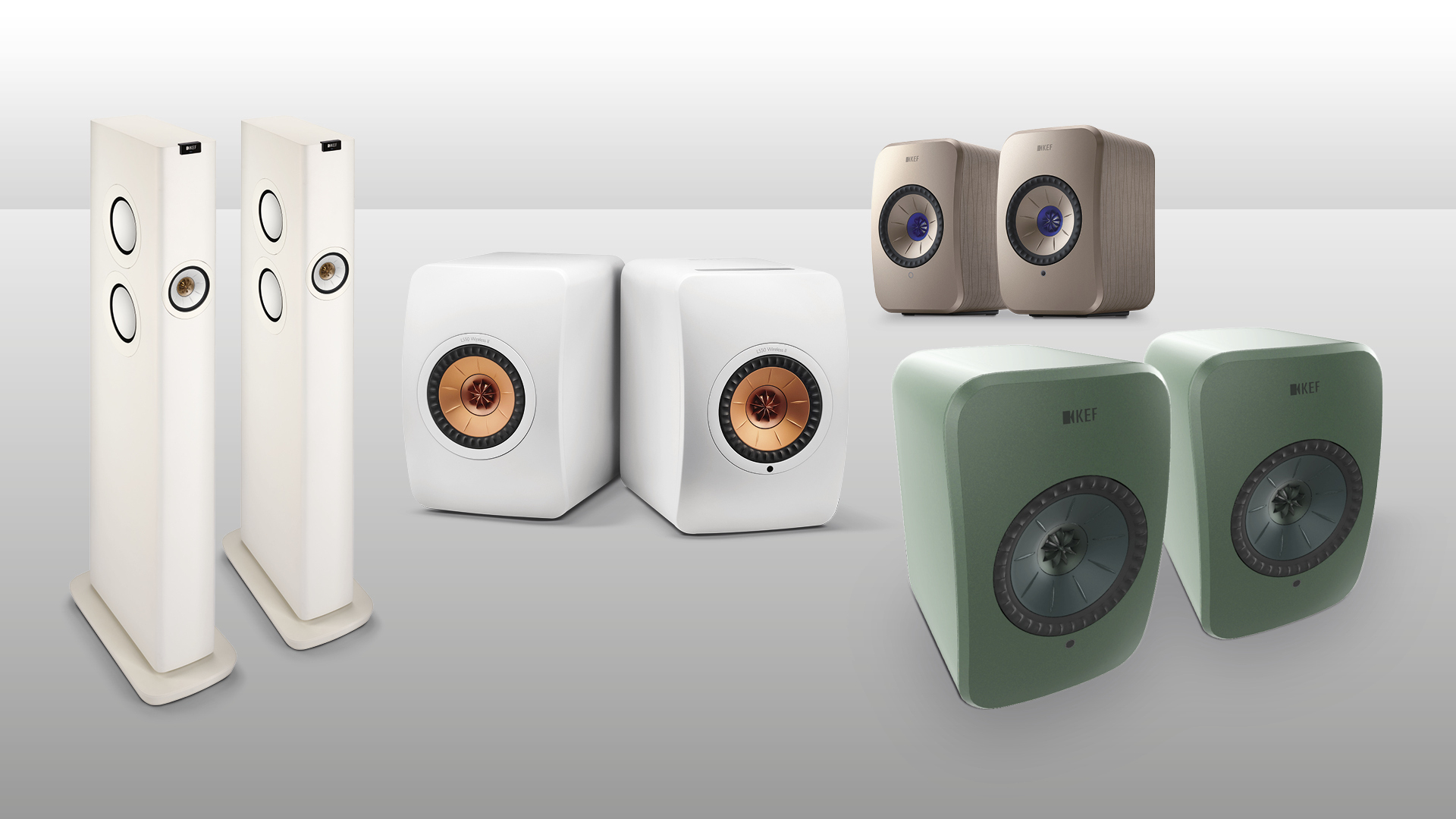
KEF's range of streaming speaker systems has impressed us since the first model launched in 2016. Combining sleek design, innovative technology and brilliant sound performance, they are all-in-one systems but in stereo speaker form, packing in source, amplification, DAC and speakers. No need for extra multiple boxes here.
While there are similar successful products from other brands, such as the five-star, Award-winning Triangle AIO Twin and the JBL 4329P Studio Monitors, KEF has dominated this niche with confidence and style. Every speaker system has received five-star reviews, while the LSX II and LS50 Wireless II are current What Hi-Fi? Award-winners in the best Systems category.
There are currently four models in KEF's LS wireless speaker systems range, from the compact LSX II LT model to the very premium, floorstanding LS60 Wireless, spanning a price range from £899 to £6000. All are fully active speakers with amplifiers powering each driver unit, have comprehensive streaming and connectivity options (with varying degrees of specification support) and can be controlled either by a slim remote control or the KEF Connect app.
But there are differences in size, technologies, driver arrangements and sound quality – and we are here to break down all those differences (and the many similarities) for each model so you know exactly what you're getting if you decide to take the plunge.
We have tested every product below in our dedicated listening rooms and listened to them against each other to ensure you get the best advice. Check out the table below for a quick comparison of the basic specifications and prices, and then scroll down for in-depth explorations of each of the four KEF systems. If you are wondering which is the best model for your musical needs, read on.
Comparison table
| Product name | KEF LSX II LT | KEF LSX II | KEF LS50 Wireless II | KEF LS60 Wireless |
| Driver unit | 11th-gen Uni-Q | 11th-gen Uni-Q | 12th-gen Uni-Q with MAT | 12th-gen Uni-Q with MAT, Uni-Core |
| Total amplification power | 200W | 200W | 760W | 1400W |
| Max file resolution | 24-bit/384kHz, DSD128 | 24-bit/384kHz, DSD256, MQA | 24-bit/384kHz, DSD256, MQA | 24-bit/384kHz, DSD256, MQA |
| Streaming protocols supported | AirPlay 2, Bluetooth, Chromecast, UPnP | AirPlay 2, Bluetooth, Chromecast, UPnP, Roon Ready | AirPlay 2, Bluetooth, Chromecast, UPnP, Roon Ready | AirPlay 2, Bluetooth, Chromecast, UPnP, Roon Ready |
| Inputs | HDMI ARC, optical, USB Type C | HDMI ARC, optical, USB Type C, 3.5mm aux | HDMI eARC, coaxial, optical, 3.5mm aux | HDMI eARC, coaxial, optical, RCA stereo |
| Outputs | Subwoofer x1 | Subwoofer x1 | Subwoofer x2 | Subwoofer x2 |
| Dimensions (hwd) | 24 x 15.5 x 18cm | 24 x 15.5 x 18cm | 30.5 x 20 x 31.1cm | 109 x 21.2 x 39.4cm |
| Weight (total) | 6.8kg | 7.2kg | 20.1kg | 62.4kg |
| Price | £899 / $999 / AU$1695 | £1199 / $1400 / AU$2195 | £2250 / $2499 / AU$4295 | £6000 / $7000 / AU$9995 |
KEF LSX II LT
KEF LSX II LT – streamlined, entry-level system


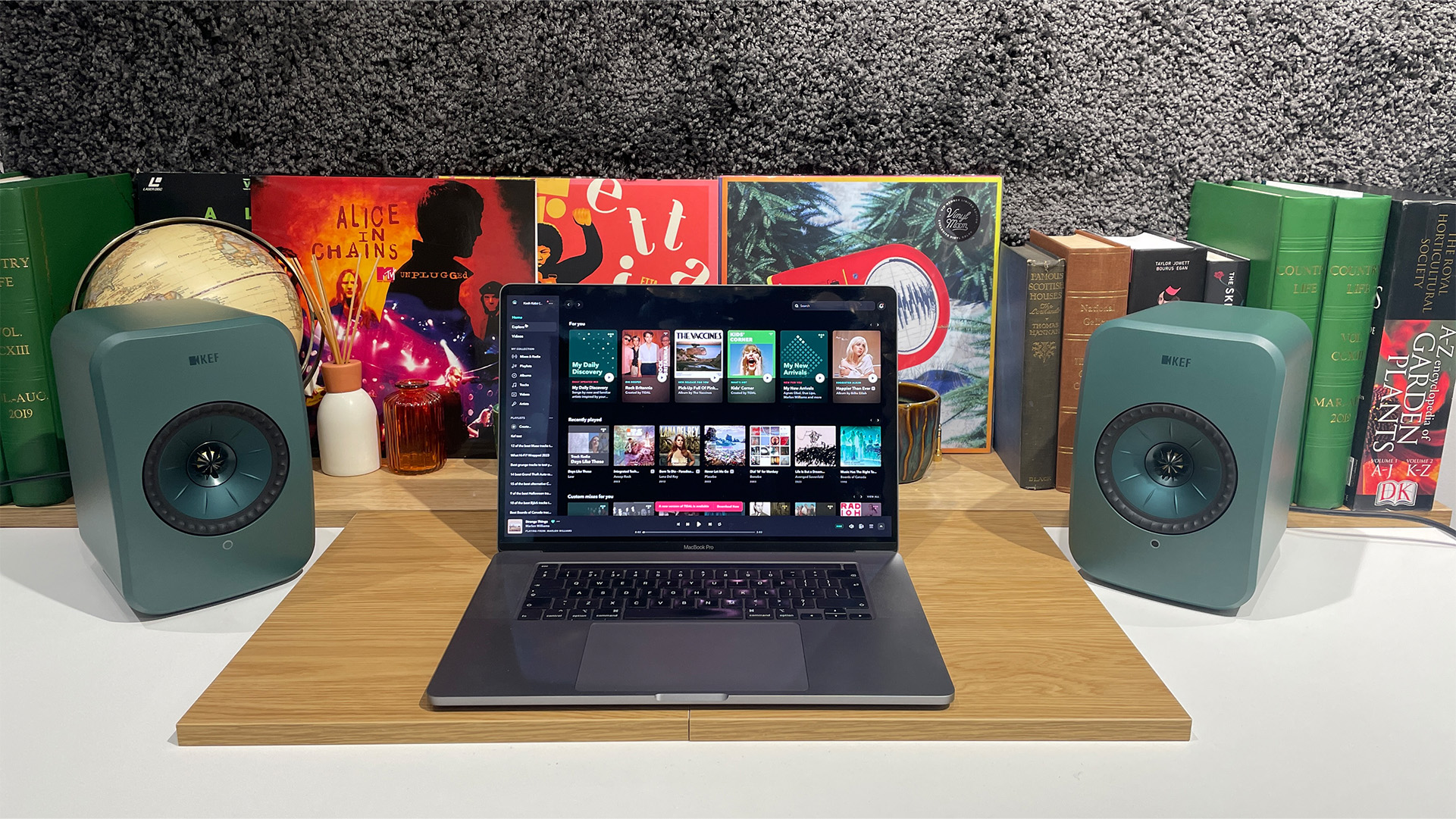
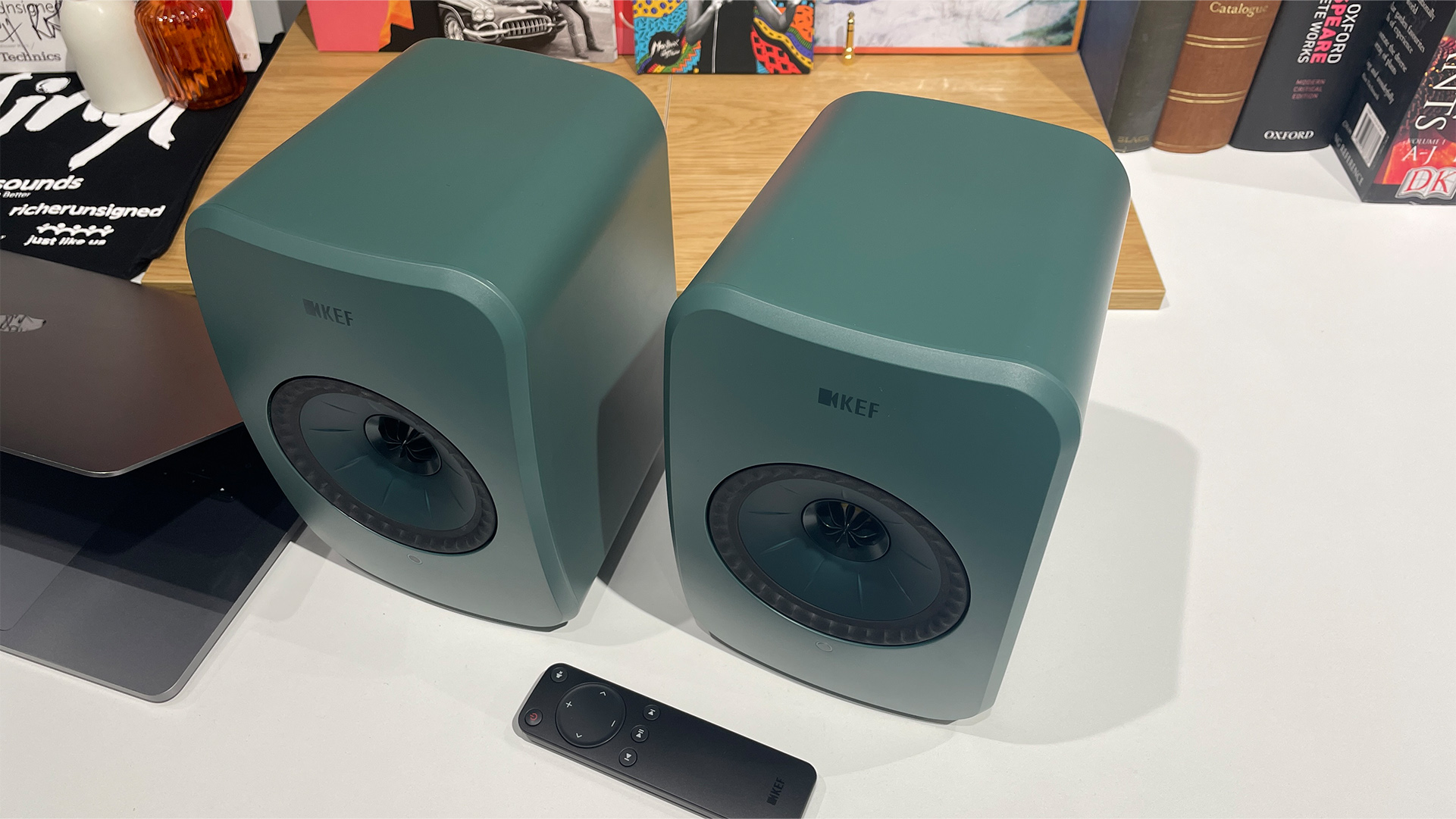
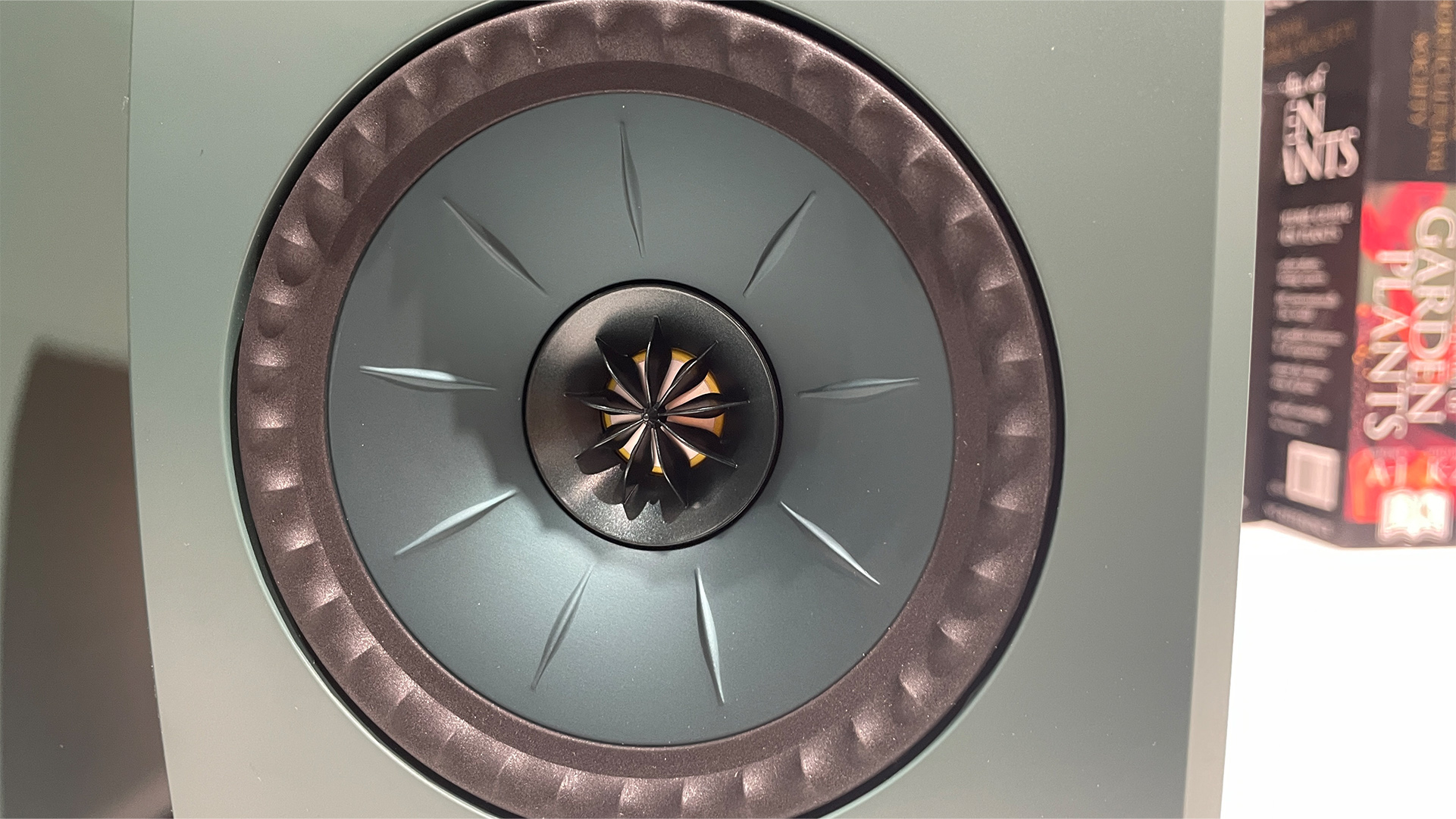
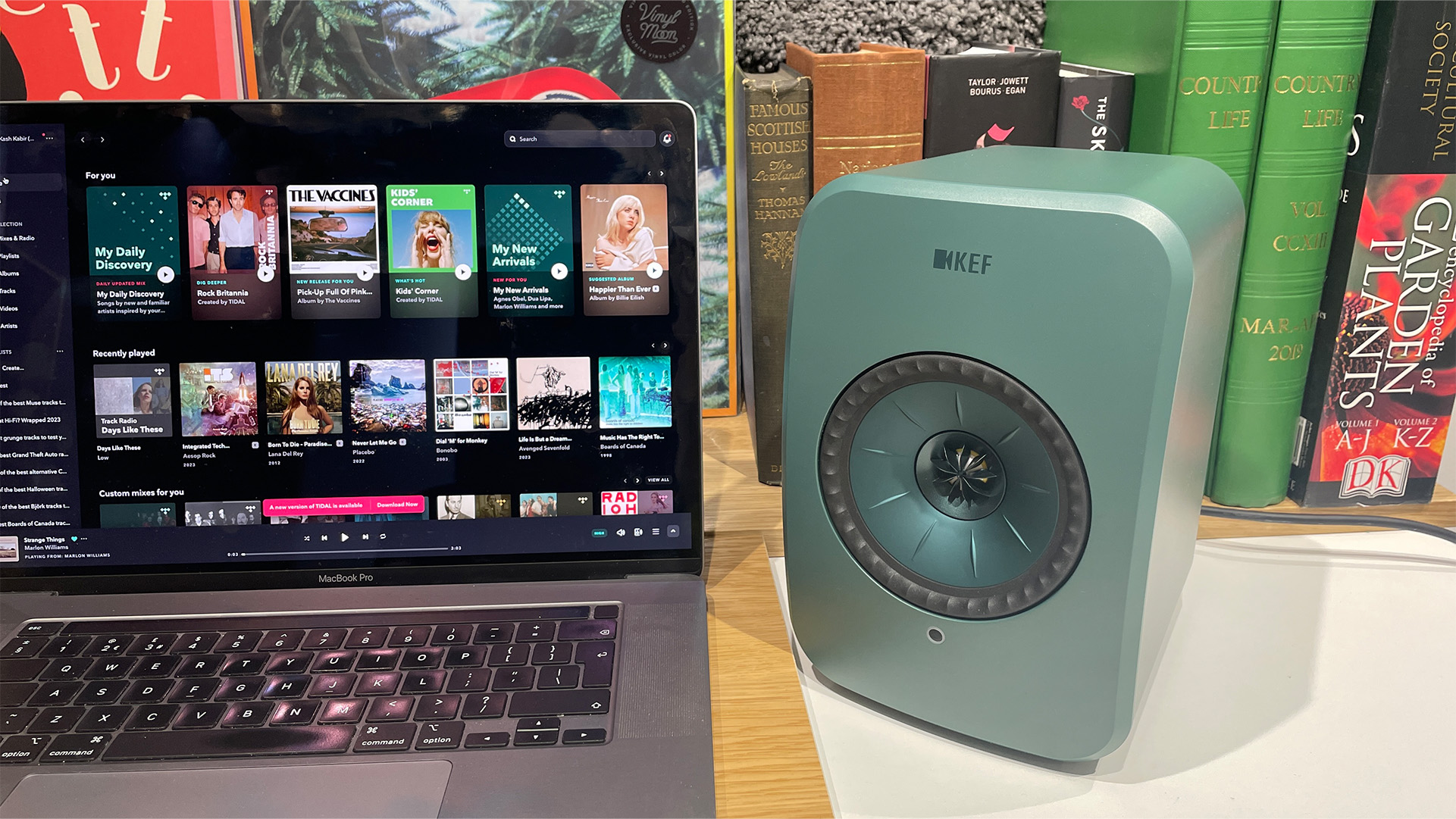
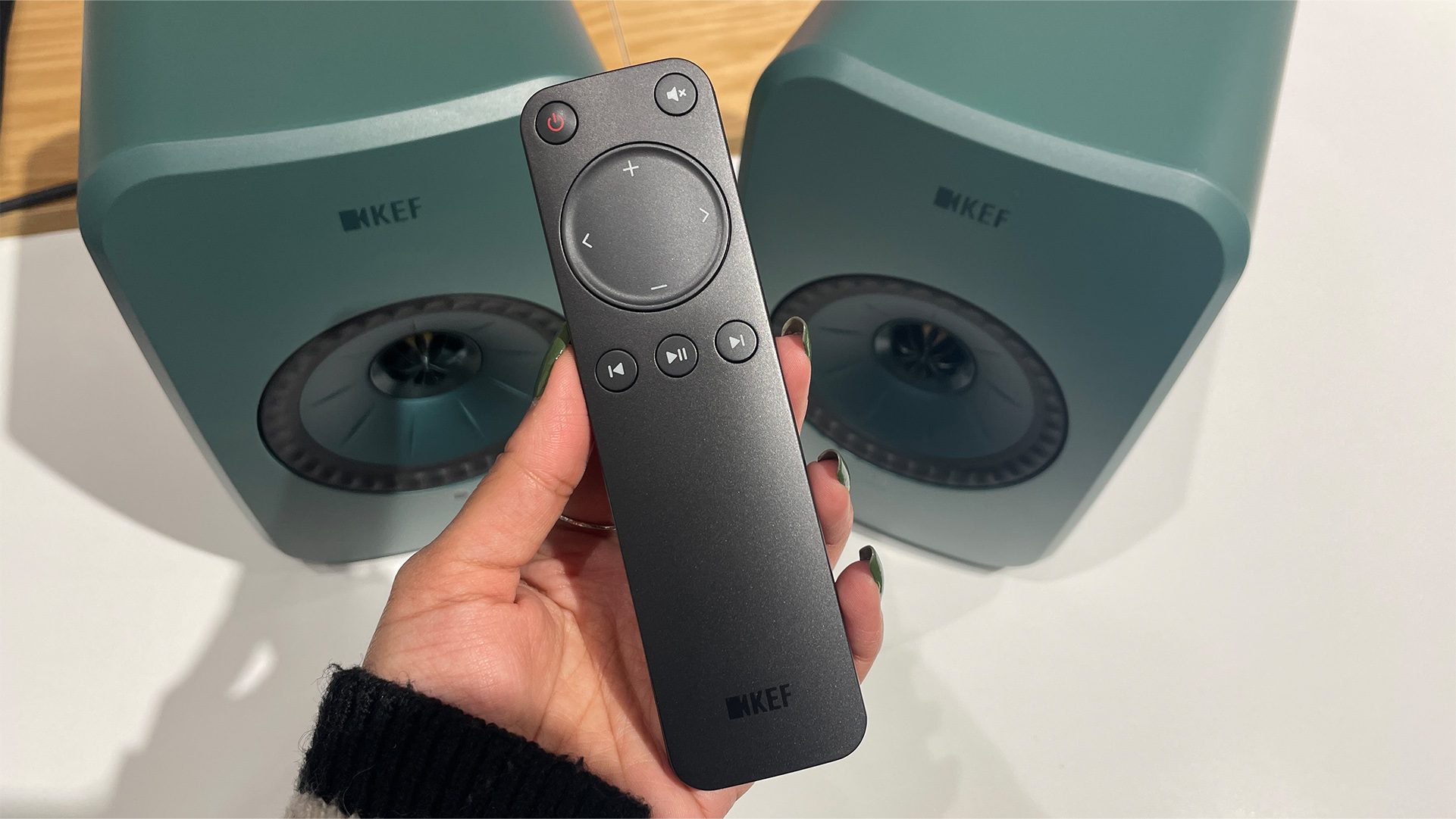
- Great value option for small spaces
- Same sound performance as the Award-winning, step-up LSX II
- Total 200W of power (100W per channel)
- Inputs: HDMI ARC, optical, USB type-C
- Available in three finishes
The LSX II LT is not only KEF's newest model, but it's also the entry point into its range of streaming speaker systems. To that end, it is a more streamlined version of its pricier brother, the LSX II (more on that below) with some features taken out; but it keeps all the streaming essentials and excellent performance that we like so much.
Design: The LSX II LT's compact dimensions are ideal for anyone looking to furnish a small room with high-quality performance and versatile streaming features. It has a footprint that can easily be accommodated on a desk flanking your laptop or gaming monitor, or used on either side of your TV. They are small enough to be placed on a bookshelf, but these speakers deserve to be placed out in the open. They look modern and stylish, and the sleek, well-built cabinet comes in three finishes. Unlike the rest of its family, you need to plug in only one speaker to the mains. The second speaker is connected via a 3m inter-speaker USB-C cable, which was long enough when placed on our listening room's desk during testing.
The latest hi-fi, home cinema and tech news, reviews, buying advice and deals, direct to your inbox.
Technology: These KEFs share pretty much the exact same DNA with the step-up LSX II system, including the same drivers, same streaming platform and same amplifiers. The LSX II LT features KEF's 11th-generation Uni-Q driver array, with the 19mm tweeter sitting in the throat of the 11.5cm mid/bass driver so it sounds as though all the frequencies are coming from a single source. You will see this two-way driver arrangement in all of KEF's modern speakers; the advantages this design has over the more conventional separate-driver arrangement are more even sound dispersion, better integration and improved time alignment. All models also feature KEF's eye-catching tangerine waveguide around the tweeter, which further aids even dispersion.
In the LSX II LT, each driver is powered by its own class D amplifier (30W to the tweeter, 70W to the mid/bass), resulting in a total of 100W per channel, or 200 watts overall. Again, the very same as the LSX II. That's plenty of oomph.
Features: These baby LSX IIs are fully furnished with all streaming features; connect via wi-fi or wired ethernet and you'll have access to all popular streaming services and internet radio, alongside AirPlay 2, Google Chromecast and access to music libraries on connected NAS drives thanks to UPnP compatibility. Physical connections include an HDMI ARC, an optical input and a subwoofer out. There's no analogue aux input, no Roon certification and no MQA decoding here, as there is on the step-up models, but we think KEF made a smart decision to include only the essentials in a bid to keep costs low. While it's nice to have every single feature made available, it can seem like a box-ticking exercise at times, and the upside of a lower-cost model at the expense of some non-essential features seems like a great compromise to us.
Hi-res music files up to 24-bit/384kHz and DSD128 are supported over the network, however, it's worth noting that all sources will be resampled to 24-bit/96kHz in this model.
Sound: Any fears that a drop in price would equate to a drop in audio quality are unfounded. The LSX II LT, true to the brand's word, delivers the same sonic signature as the step-up LSX II model. Listening to the two side by side on a desk, there is virtually no difference between the two models. As we say in our review: "If you loved the performance of the LSX II system, you will likely be enamoured of what this new LT version is offering, too."
The LSX II LT delivers plenty of punch, solidity, focus and a snappy sense of drive and momentum with ease. It sounds crisp and detailed, and regardless of the genre, the file quality or the source played, the LT remains taut and controlled. The top end never strays into over-enthusiasm and that bass, while fun, forceful and surprisingly weighty considering the LT's petite dimensions, never sounds flabby. Whether playing Debussy's Clair de Lune or Run the Jewels' The Ground Below, there's grit and muscle in the lower frequencies while the rhythmic drive and energy remain propulsive and precise. Those delicate but firm textures in piano notes are conveyed with layers of detail, while voices are tinged with emotional expression and insight. Even when confronted with a complex Hans Zimmer soundtrack, this KEF system "bends and flexes to reflect the full range of strange, quirky timbres on display, be they the mischievous twangs of a cimbalom or the hurried, chaotic scratches of bows passing across the strings of a Victorian-style violin."
That KEF has been able to deliver the same effortlessly cohesive performance of its more illustrious, expensive sibling at a cheaper price – without any compromises to the sound – should be applauded. If you can live without the extra features, the LSX II LT is fantastic value and a great entry point into the world of streaming speaker systems.
Reasons to buy: Most affordable model of KEF's speaker systems range; great compact design for desktop use; all the essential streaming features; the Award-winning sonic performance of the step-up LSX II for a cheaper price.
Reasons to avoid: If you really can't do without the 3.5mm aux input and MQA/Roon support; some might prefer the more luxurious finish options of the LSX II.
- Read the full KEF LSX II LT review
- Hi-fi now has a lot of boxes to tick, but could it ultimately be costing consumers?
KEF LSX II
KEF LSX II – compact, stylish and fully featured

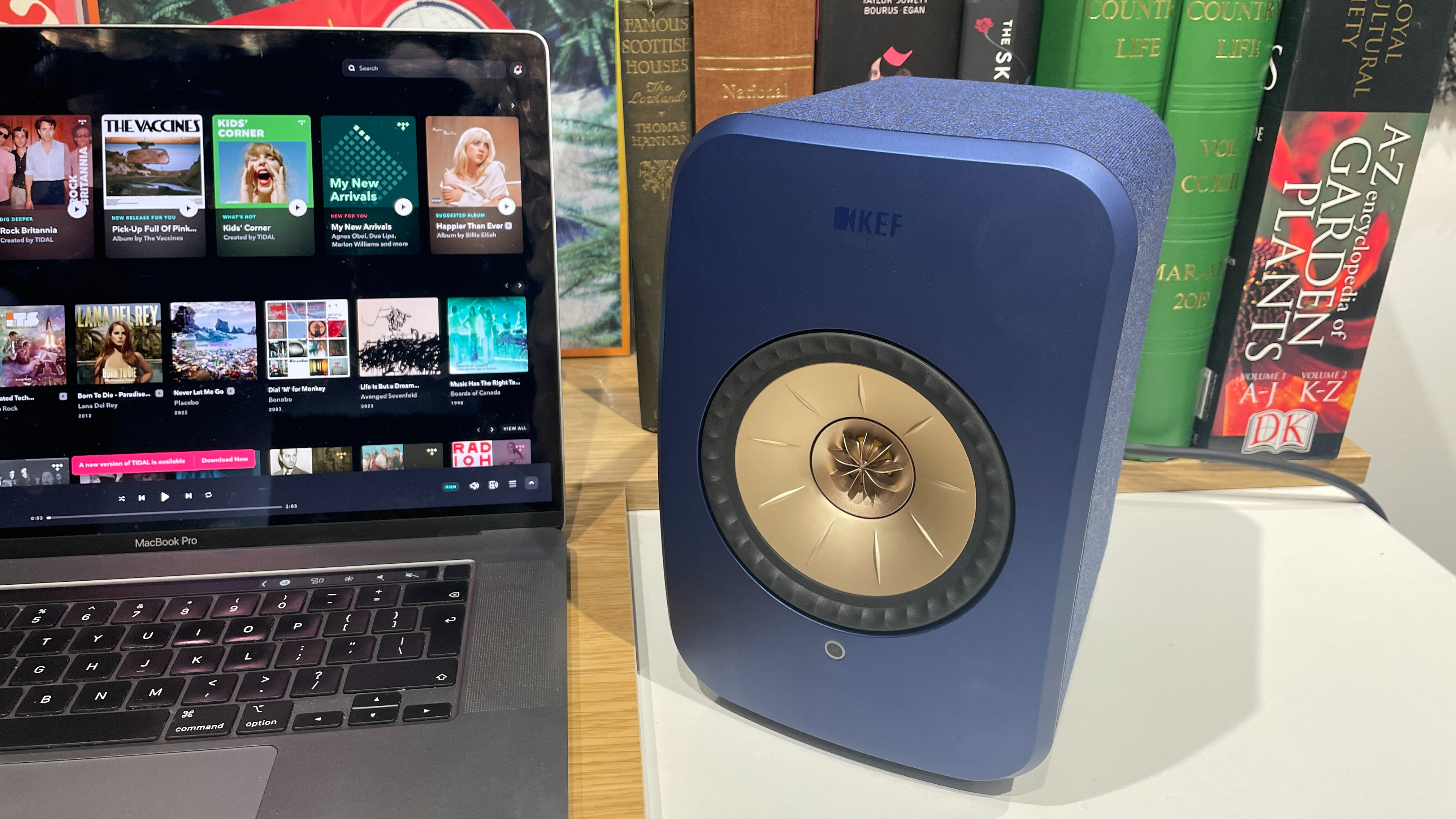
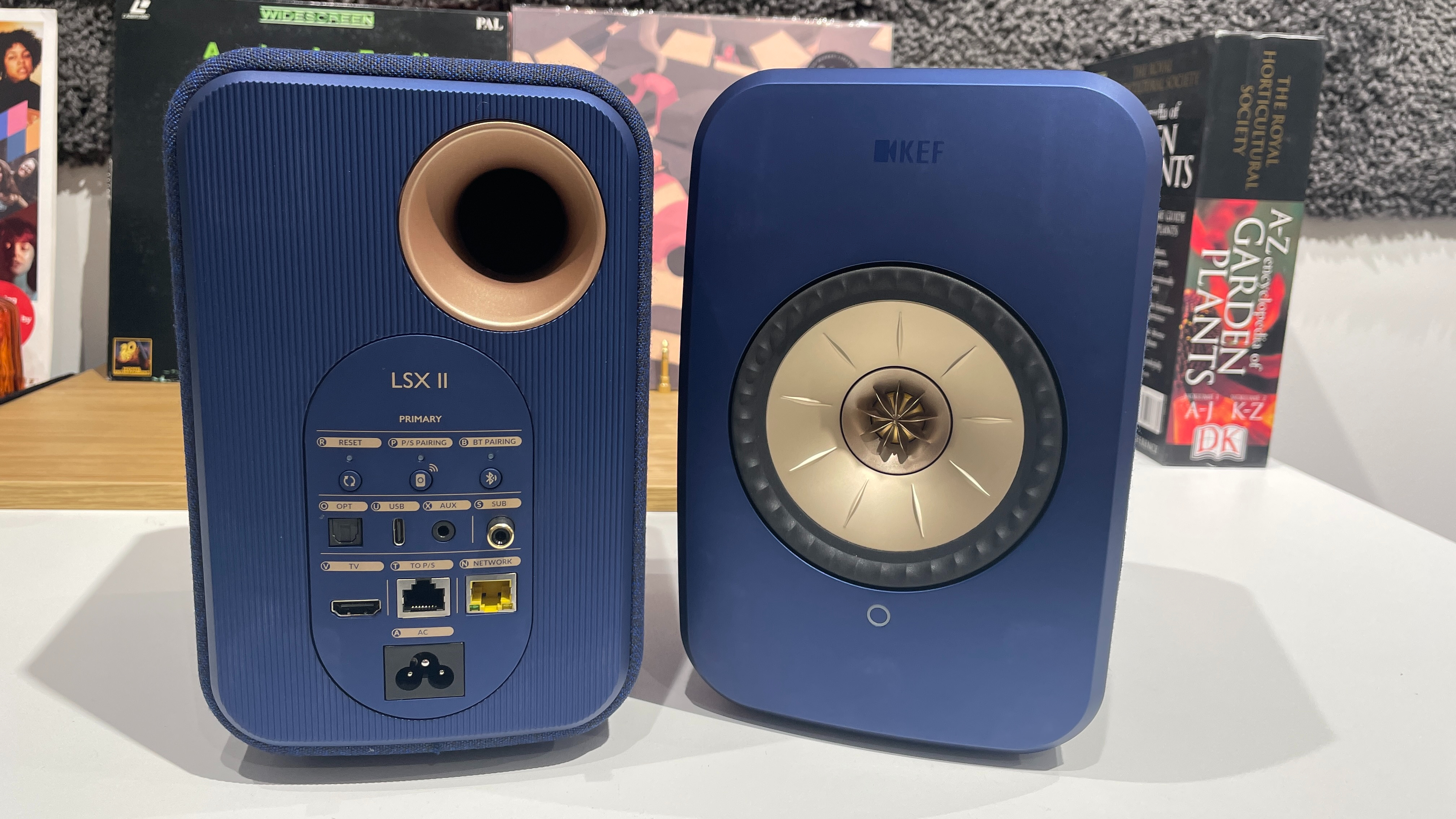
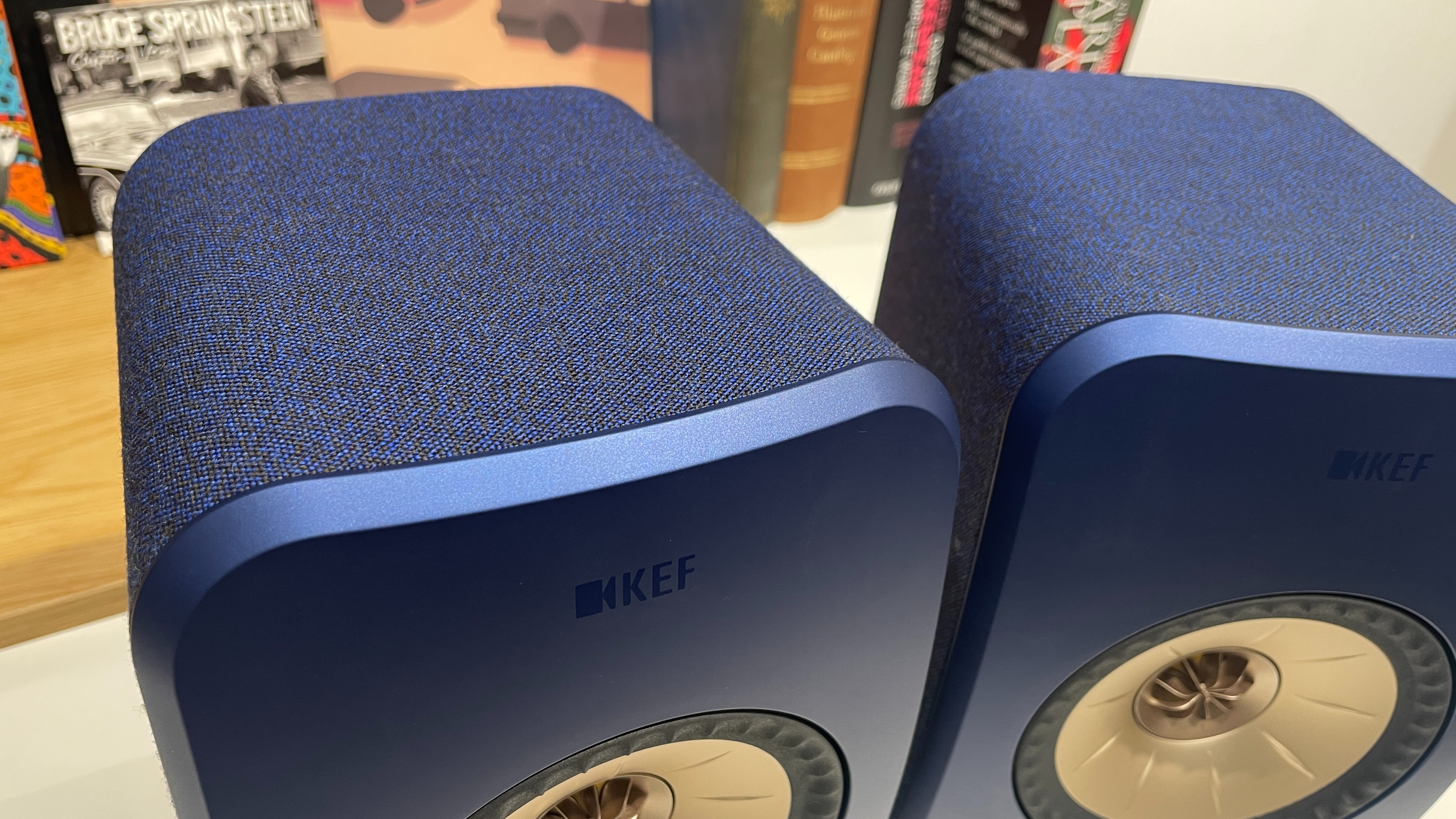

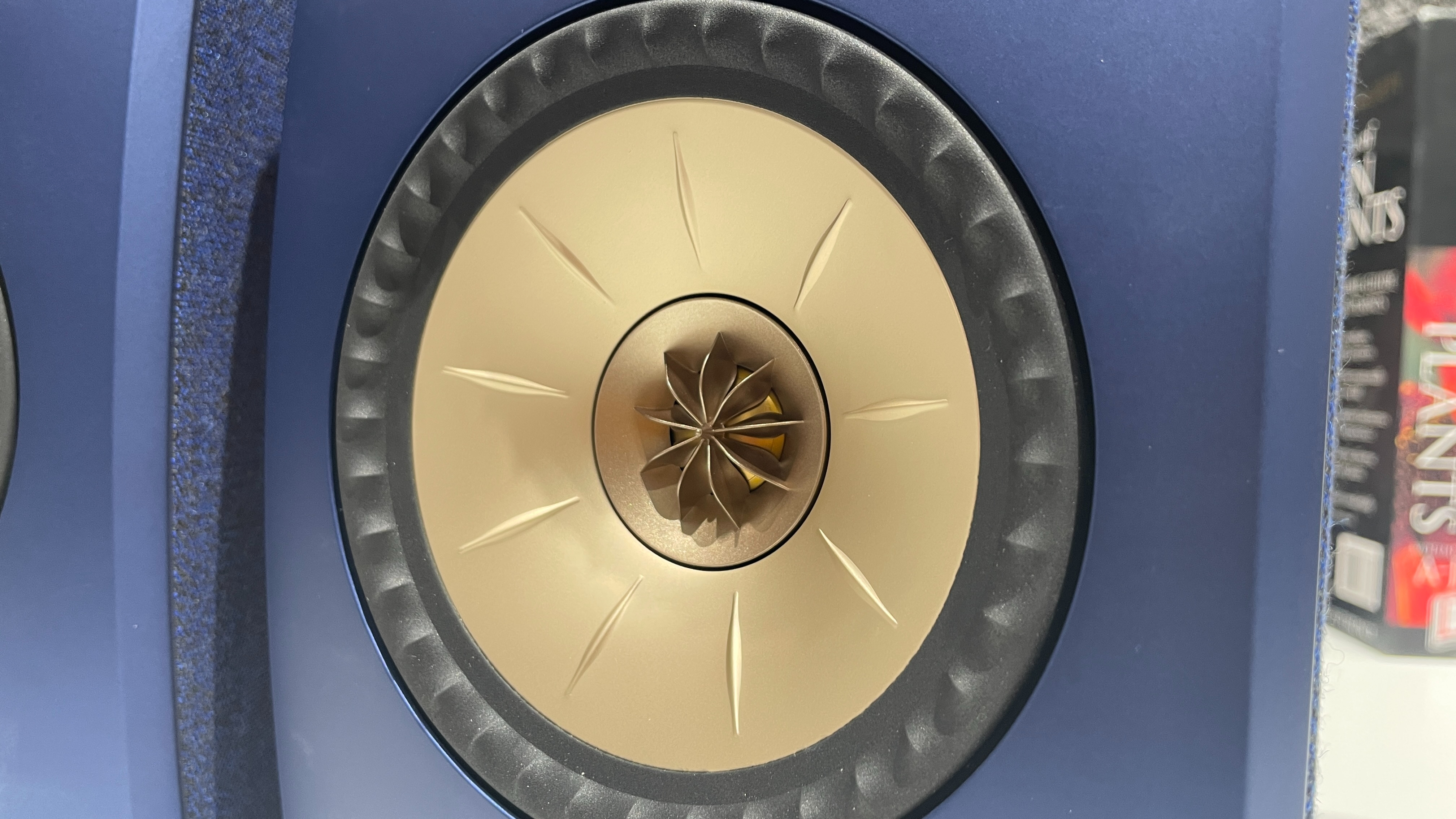
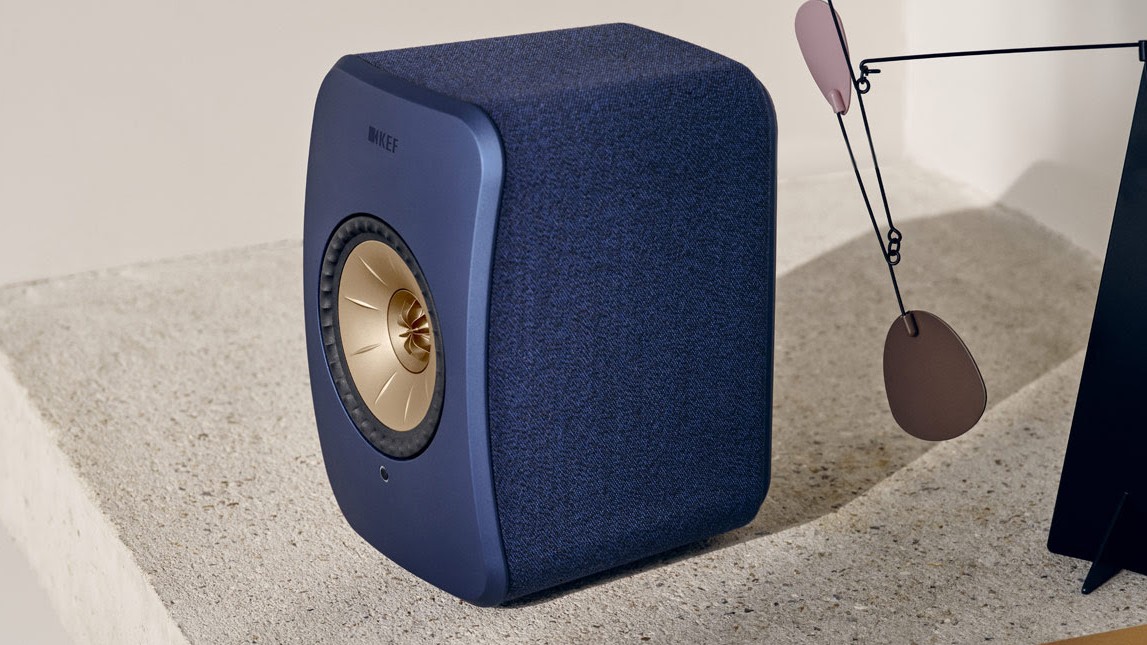
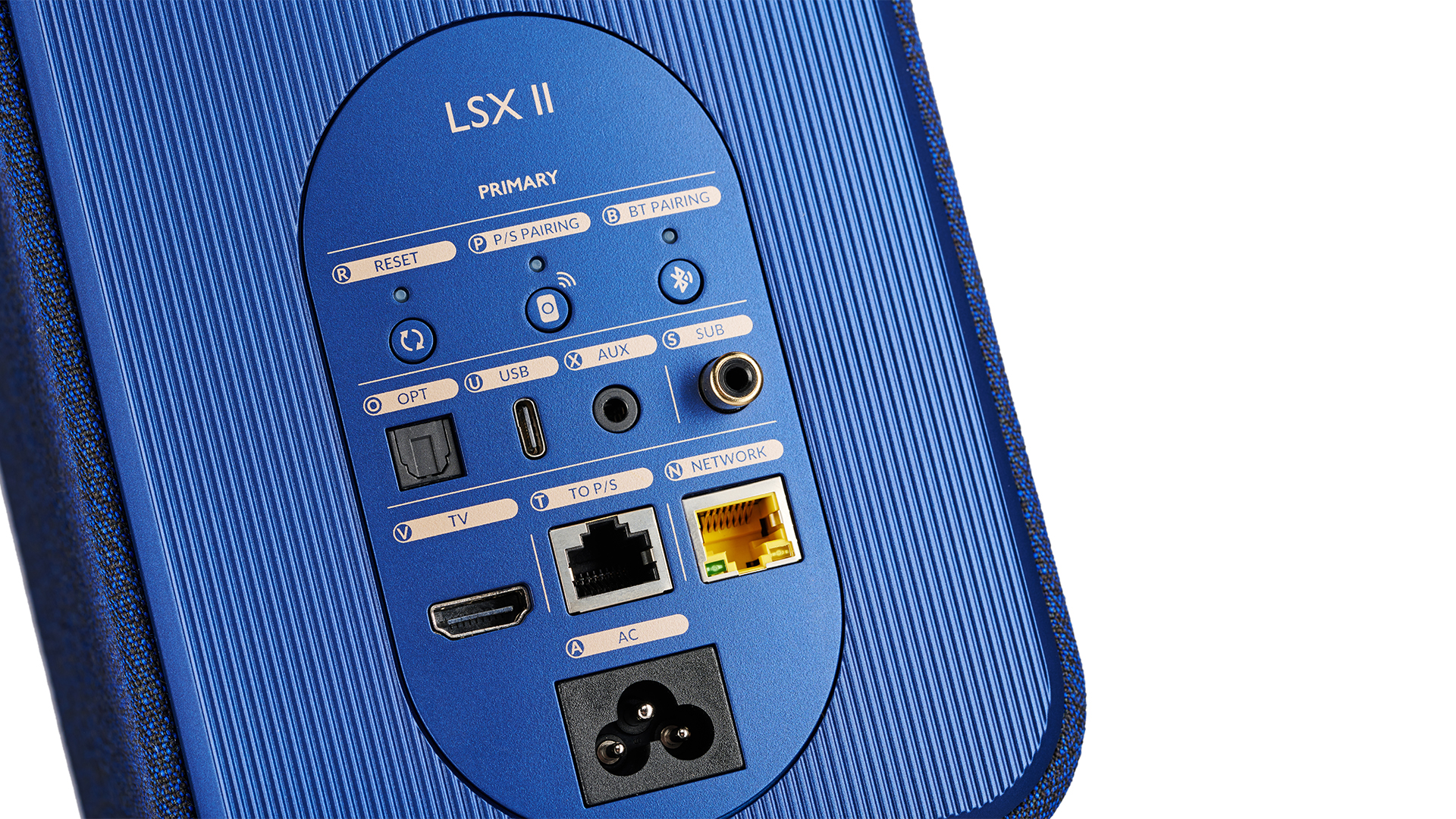
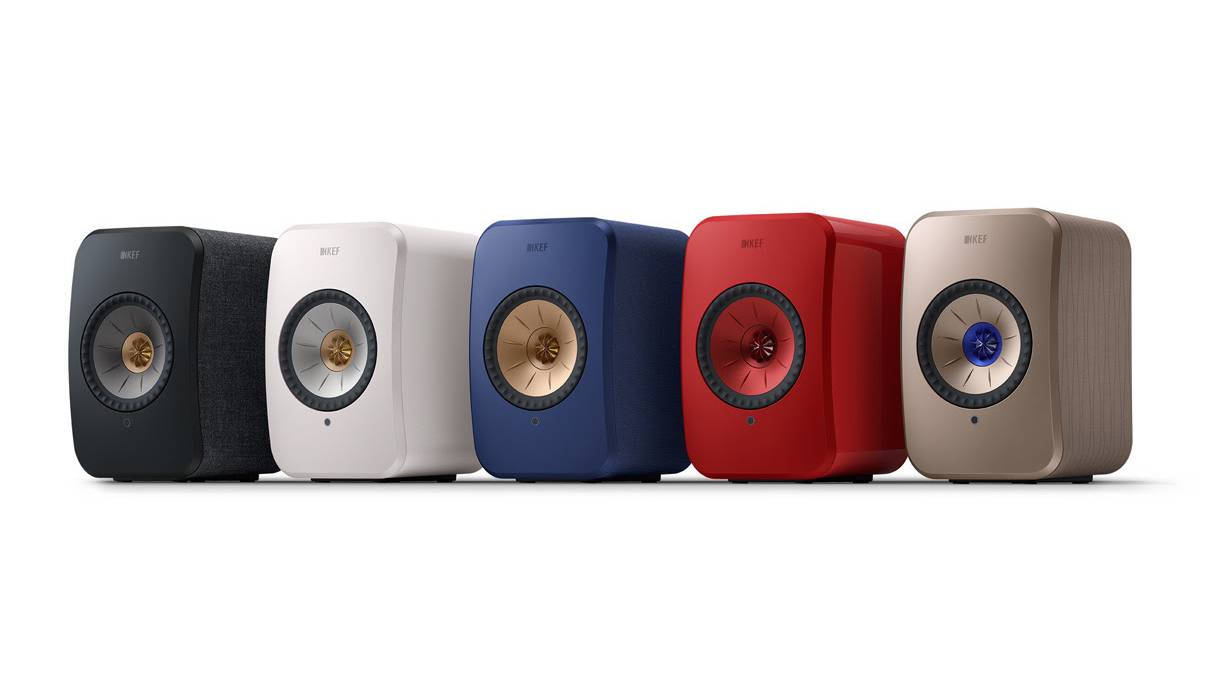
- Compact design ideal for desktop use and small rooms
- Luxurious finish
- Total 200W of power (100W per channel)
- Inputs: HDMI ARC, optical, USB type C, 3.5mm aux
- Available in six finishes
KEF's very first LSX model was a hugely appealing idea: the concept of the original LS50 Wireless speaker system but in a more compact, desktop-friendly design? We're sold. It's a delightful execution that seamlessly blends convenience and excellent, entertaining sound, and the LSX II sequel only refined that idea to Award-winning success.
Design: The LSX II boasts a compact footprint that can fit onto any desktop or double up as TV speakers even in small rooms – and it looks absolutely gorgeous. This model comes in more finishes than any other KEF speaker system (six in total) but it's the fetching Kvadrat fabric around the cabinet that gives it an elevated sense of style and luxury that's hugely enticing. The metal finish of the Uni-Q drivers matches or contrasts depending on the finish too; it's a stunning aesthetic. We would almost – almost – pay the extra £300 over the entry-level model for the higher quality finish alone.
There are various stand options for the LSX II. You can choose the S1 floor stands (£320 / $350 / AU$649), the P1 desk pads (£140 / $180 / AU$279) or a B1 wall bracket (£190 / $230 / AU$379) depending on how and where you want to place these speakers.
Technology: The same drivers, class D amplifiers and power ratings are used in the LSX II as in the LSX II LT. The LSX II came first, of course, and the 11th-gen Uni-Q driver array with 100 watts of amplification per channel suited the smaller cabinet design perfectly. It's a bit of a shame that KEF's innovative MAT technology isn't included here, but that is down to cost reasons and that tech is reserved for the more premium models in the range.
KEF's W2 wireless streaming platform is present across all models, as is the updated KEF Connect app for iOS and Android devices. It's a neat and straighforward app, and through it you can select the source, play music from supported streaming services and internet radio, control playback and go multi-room if you have more than one KEF LS speaker system in the house. Best of all, it has clever EQ settings which should be your first port of call when setting up the speakers. You can tell the app exactly where the speakers are placed (on stands, on a desk, if they are up against a wall or in free space), the size of the room they are in and how damped it is, and it will adjust the sound accordingly. We find this to be a very useful tool, and dragging the sliders around tangibly affects the sound profile of the speakers.
Features: HDMI ARC, optical input and a subwoofer output are all present and streaming support is extensive, with Roon Ready certification, an analogue aux input and MQA decoding added to its list of features on top of what you get in the LSX II LT. In this LSX II model, you have to plug both speakers to the mains, and you have the option for either a wireless or a wired connection between the two speaker units. This allows for more flexible placement in your home audio system, and we are fond of less cable clutter in general, too. Just take note that while the LSX II system supports playback of files up to 24-bit/384kHz (and DSD256), all tracks are downsampled to 24-bit/96kHz (when using the wired speaker connection) or to 24-bit/48kHz (when using the wireless link). The wired USB Type-C input will let you play 24-bit/192kHz natively.
Sound: The LSX II wowed us with its superb sonic performance when we first reviewed it and now, two Award wins later, it still impresses. Excellent clarity, rhythmic drive and exciting dynamics – this LSX II delivers a confident presentation that feels effortless. We said in our original review: "The speakers communicate all the subtle dynamic shifts in the piano key strikes, drum thwacks and guitar string plucks with ease – there’s a real sense of refinement and maturity to the sound without being showy. You just know you’re in the presence of a capable pair of speakers."
You can't expect these compact speakers to delve too deep into the lower frequencies, but the punchy bass that it does deliver is weighty, full, fun and tightly controlled. The LSX II system has a terrific sense of rhythm, leading us to tap our foot whether we're playing The Kinks, The Killers, Dua Lipa or De La Soul. From the haunting, wispy melodies of folk band The Unthanks to the blockbuster force of a Tina Turner track, the KEF handles textures and nuances in detail with aplomb, proving to be just as precise and focused whether the speakers are on stands or on a desk. Tonally, the presentation is inviting, natural and well-balanced. It handles the interplay between instruments and vocals brilliantly, and there are so many layers unearthed that, most of all, they make all songs interesting to listen to. It's worth mentioning that we do prefer the sound of the LSX II when the inter-speaker ethernet wired connection is used over the wireless link – it's not a huge difference, but we find that going wireless makes the music a little less substantial and a little more forward.
Yes, you can get the same superb performance from the new, cheaper LSX II LT model, but the LSX II still feels a cut above, and is the premium choice for users who want a little more extra – both in specification and luxurious design.
Reasons to buy: Winningly compact all-in-one speaker system with ample streaming and connectivity features; hugely entertaining, capable sound; gorgeous design/finish.
Reasons to avoid: If you want a bigger sound with more depth, opt for the step-up LS50 Wireless II. Feels too pricey? The step-down LSX II LT is cheaper, has fewer features, but sounds the same.
- Read the full KEF LSX II review
- KEF LSX II vs KEF LSX II LT: which compact speaker system is best for you?
KEF LS50 Wireless II
KEF LS50 Wireless II – the sweet spot for stunning sound

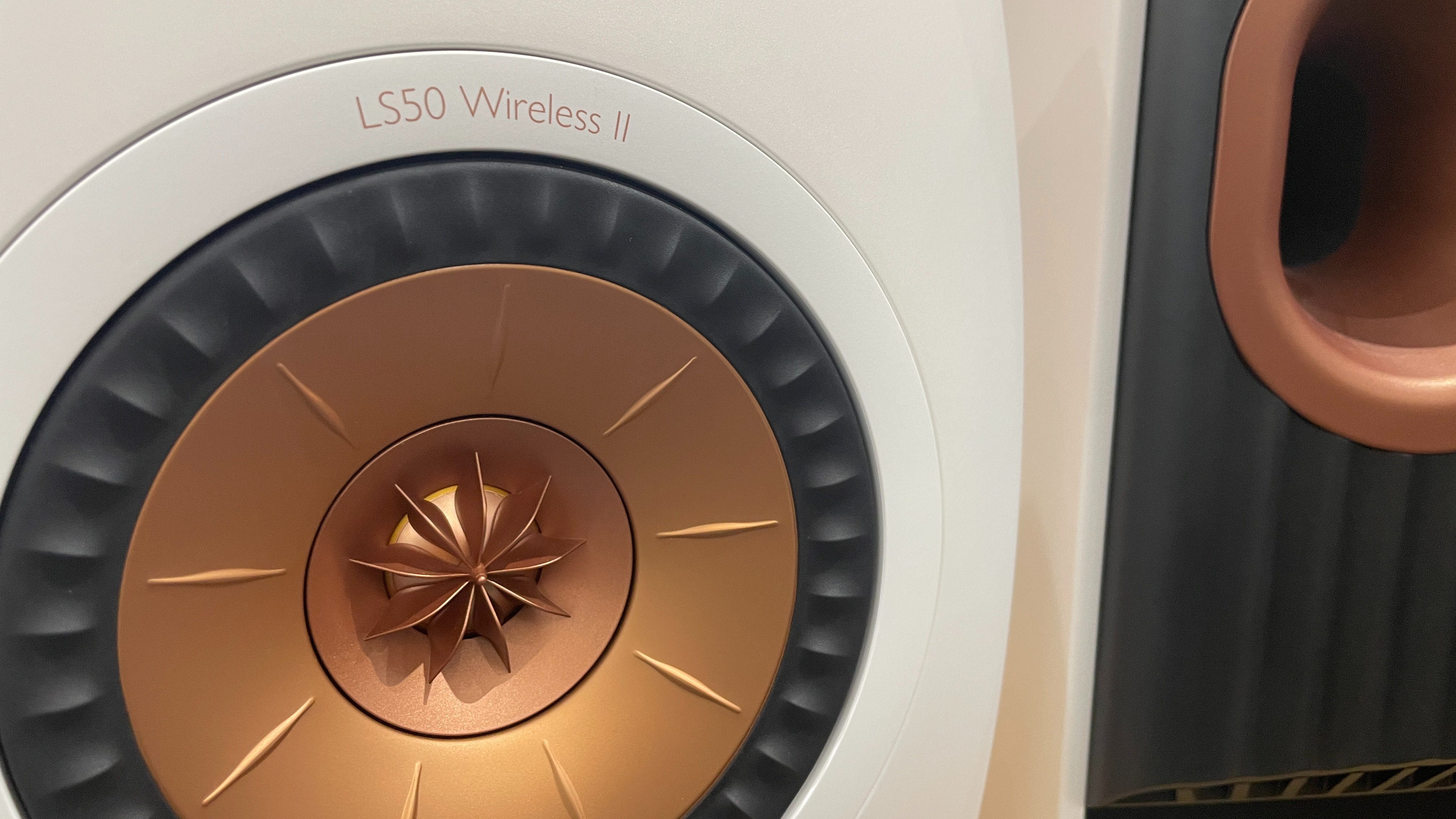
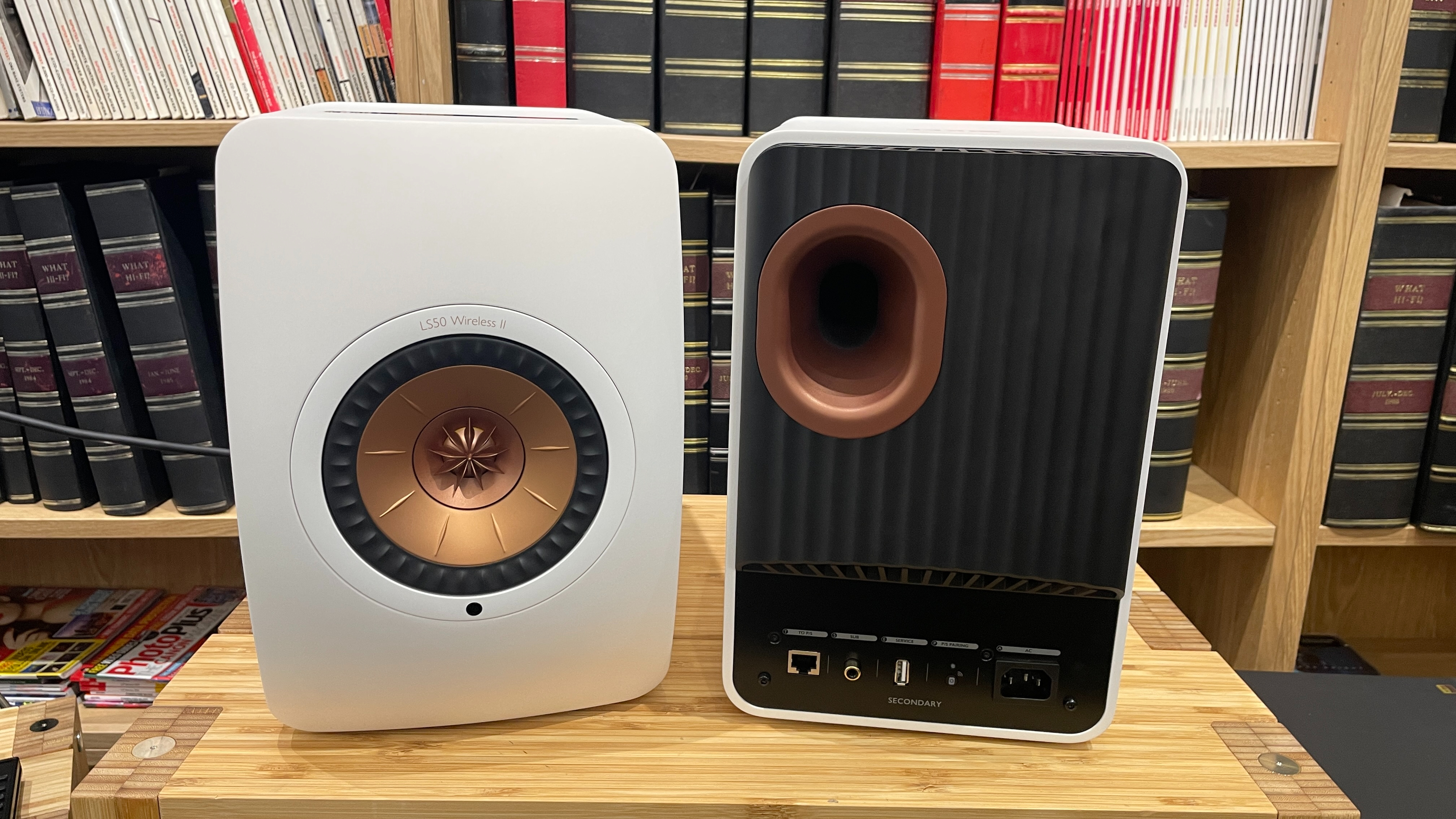

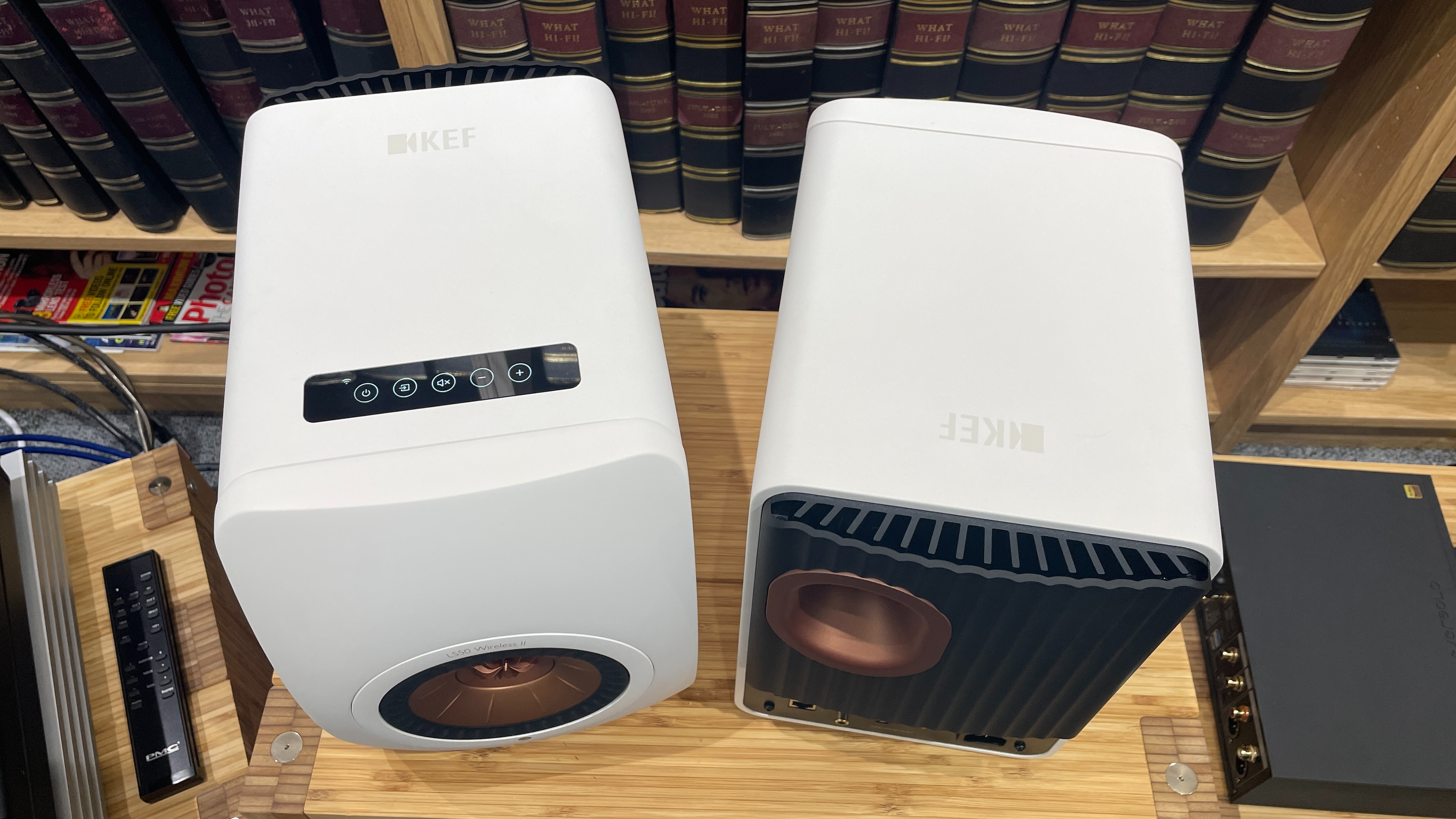


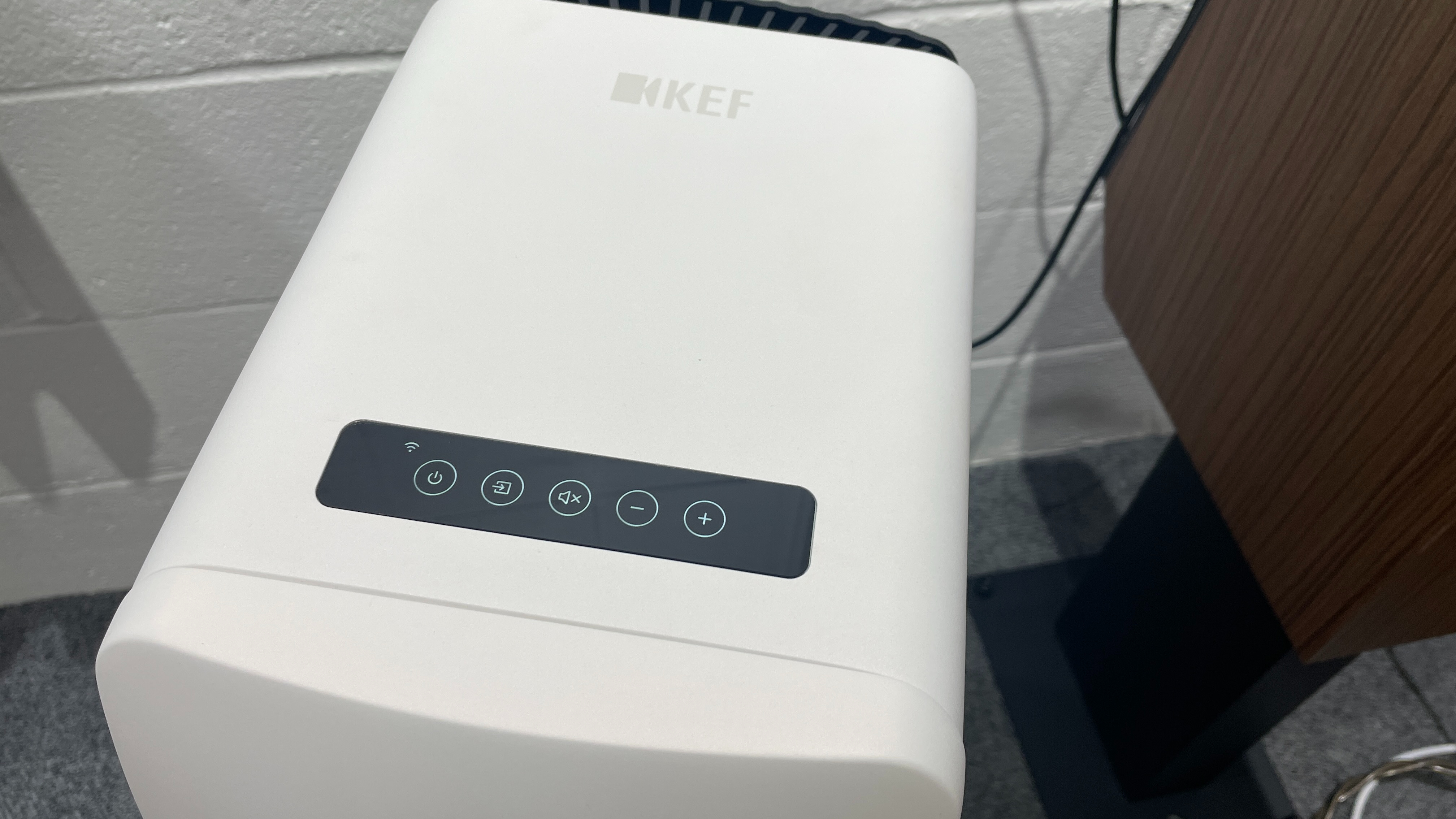

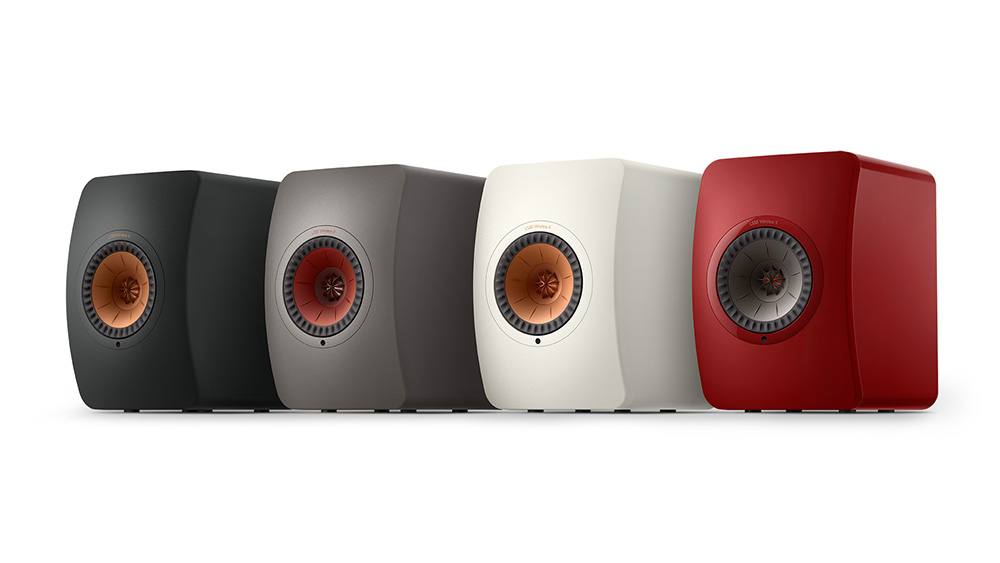
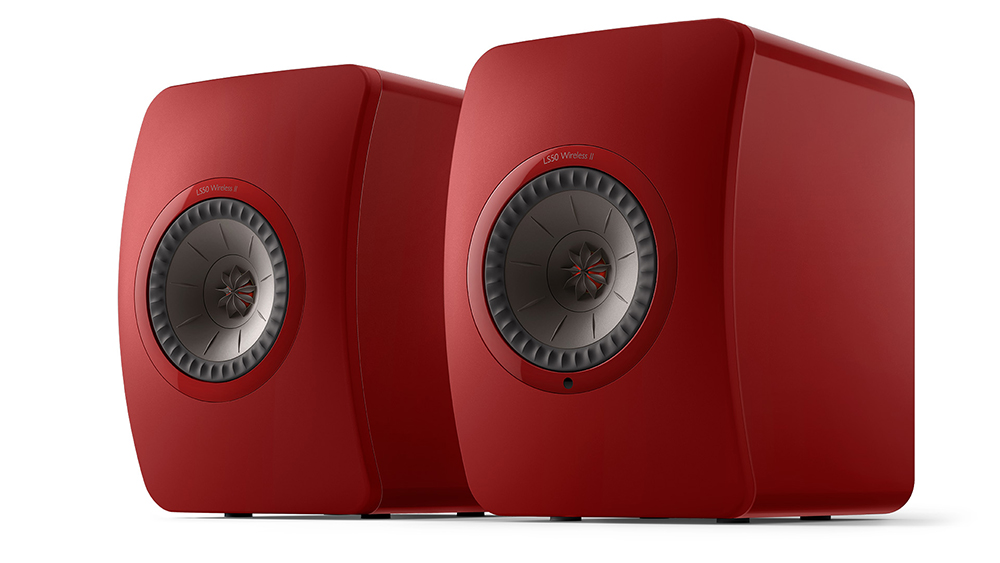
- Ideal for mid-to-large rooms
- Sweet spot for sound, features and price
- Total 760W of power (380W per channel)
- Inputs: HDMI eARC, coaxial, optical, 3.5mm aux
- Available in four finishes
KEF's very first wireless speaker system, the LS50 Wireless from 2016, was an active take on the brand's legendary LS50 passive speakers. The concept and execution impressed us so much, we inducted it into our 2017 Hall of Fame. The current sequel, the multiple Award-winning LS50 Wireless II, is even more refined, more user-friendly and sounds even more thrilling.
Technology: There are clear technological and performance steps above the LSX model. The LS50 Wireless II sports a newer 12th-generation Uni-Q driver array with larger 25mm tweeter and 13cm mid/bass driver. But most importantly, it has MAT. Metamaterial Absorption Technology (MAT) is an innovative KEF design that absorbs the unwanted rearward sound waves emanating from the back of the tweeter and stops them from affecting the front output, resulting in cleaner highs. MAT's puck-sized design with its maze-like structure claims to absorb 99 per cent of these rearward waves, and the performance upgrade you get from MAT-equipped speakers (in active and passive KEF models such as the LS50 Meta) is astonishing. You get more power from these bigger speakers, too, with 100W of class A/B amplification powering the tweeter, while 280W class D amplifiers power the mid/bass driver. Altogether, that's a whopping great 380W per channel, or 760W in total, available on tap.
Features: Streaming and connectivity are even more comprehensive here, with physical connections including HDMI eARC, coaxial, optical, 3.5mm aux inputs and two subwoofer outputs. It ditches the USB type-B input from the first-gen model, but we have honestly not missed it at all. As with the LSX II, you get the option of a wired or wireless connection between the two speaker units. Using the wired inter-speaker cable route? You can stream in up to 24-bit/192kHz resolution, while the wireless limit is higher than the LSX II at 24-bit/96kHz. Native playback of 24-bit/192kHz is supported over the wired coaxial and HDMI inputs. It has MQA, Roon Ready and UPnP compatibility, and all popular streaming services are supported through the well-laid-out KEF Connect app (which is a huge improvement over the first-gen and rather buggy Stream app).
Design: They look stunning. The LS50's familiar curved cabinet design returns and the build and finish are of superb quality. There's no fancy fabric cover here, but the sturdy cabinet exudes elegance and high quality regardless. The shiny Uni-Q driver contrasted against the four finishes available makes for a striking design. An additional flourish is that the primary speaker has a touch-sensitive panel on top that lets you turn the power on, mute, change source and volume with a quick tap.
We highly recommend placing these speakers on dedicated speaker stands for them to sound their best. Their larger dimensions (they are especially quite deep) mean you can't simply place them on a desk or shove them into bookshelves, and you would be doing their performance a disservice. Any good speaker stand will do, but dedicated KEF S2 Floor Stands (£400, $449, AU$800 per pair) are also available.
Sound: For us, this is the sweet spot of KEF's speaker system range. Sitting smack in between the compact models and the floorstanding version, the LS50 Wireless II offers the best of both designs. You get the now-familiar KEF sonic signature that is wonderfully clean, punchy, maturely balanced and clearly detailed, but this LS50 Wireless II, with its larger cabinet volume and larger drivers and more power, just sounds so effortless. There's a depth to the layers of detail and dynamic expression unearthed that just physically isn't possible from the smaller LSX models, and the low-end bass extension is more far-reaching. It goes deep. The dynamics have so much ease and more room to play with – it sounds bigger and more powerful, but also so much more relaxed, like it can breathe more subtlety into every note of music.
Our full review goes into detail about the effectiveness of MAT in this model, which is "clearly heard in the cleanliness of the treble, although the difference in purity can be heard across the frequency range... The whole presentation has been opened out, that extra room not only filled with subtler, more precise detail, but also allowing for greater instrument separation that makes its delivery sound much less congested." The added spaciousness doesn't affect the cohesion and integration of the Uni-Q driver, either. There's clarity and insight in spaces, with the system laying bare all the delicate intricacies in Agnes Obel's distinctive voice in The Curse, while the stop and start of piano notes are more deftly defined. Agile and driven, tuneful and flexible with any style or quality of recording played through it, the LS50 Wireless II is a refined, mature and masterfully entertaining speakers system.
Reasons to buy: A class-leading all-in-one speaker system with an excellent balance of design, features and stunning sound quality. A modern and convincing alternative to a traditional hi-fi separates setup.
Reasons to avoid: Pricier than the LSX models, and you will need adequate space (and dedicated speaker stands) to accommodate them. Separate stands are an extra cost.
- Read the full KEF LS50 Wireless II review
- Speaker systems are in danger of killing budget hi-fi separates, but they shouldn't
KEF LS60 Wireless
KEF LS60 Wireless – all-in-one floorstanders
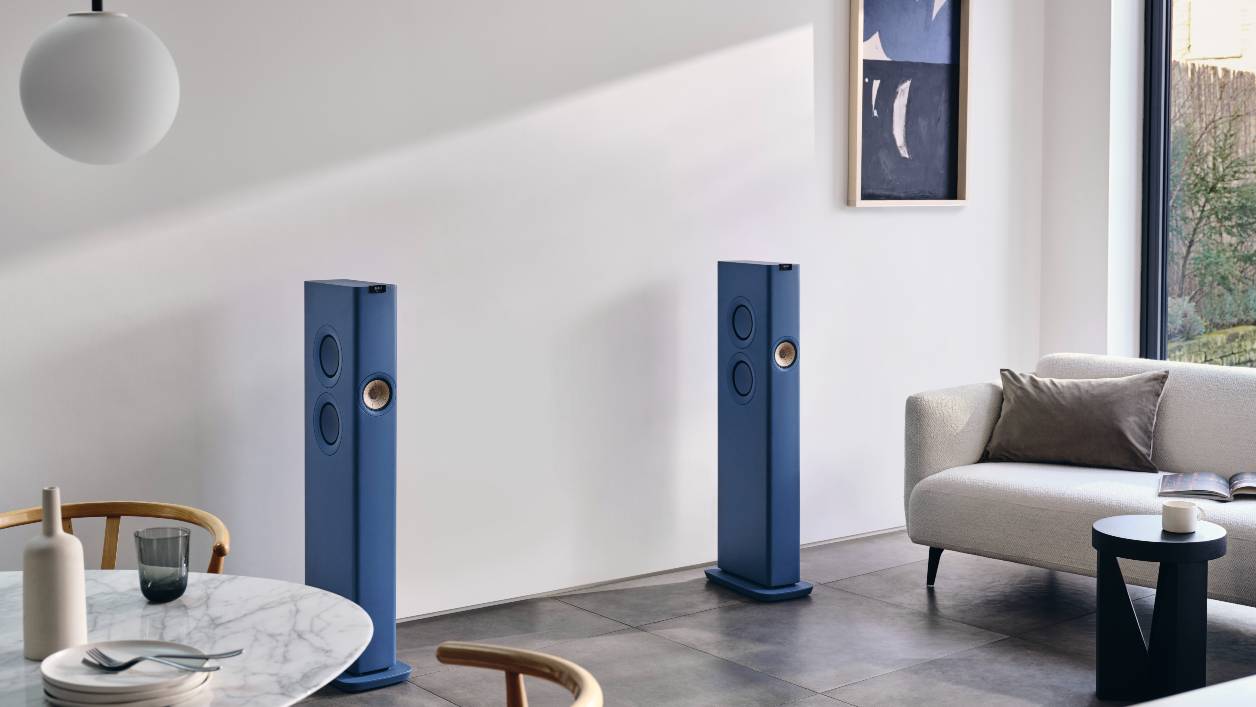
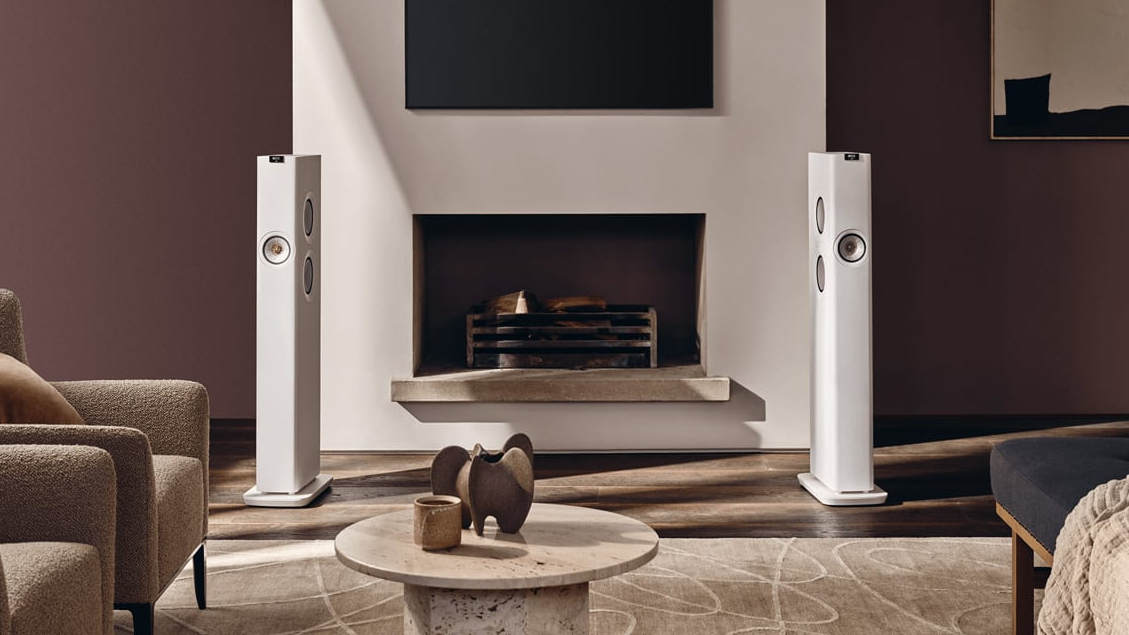
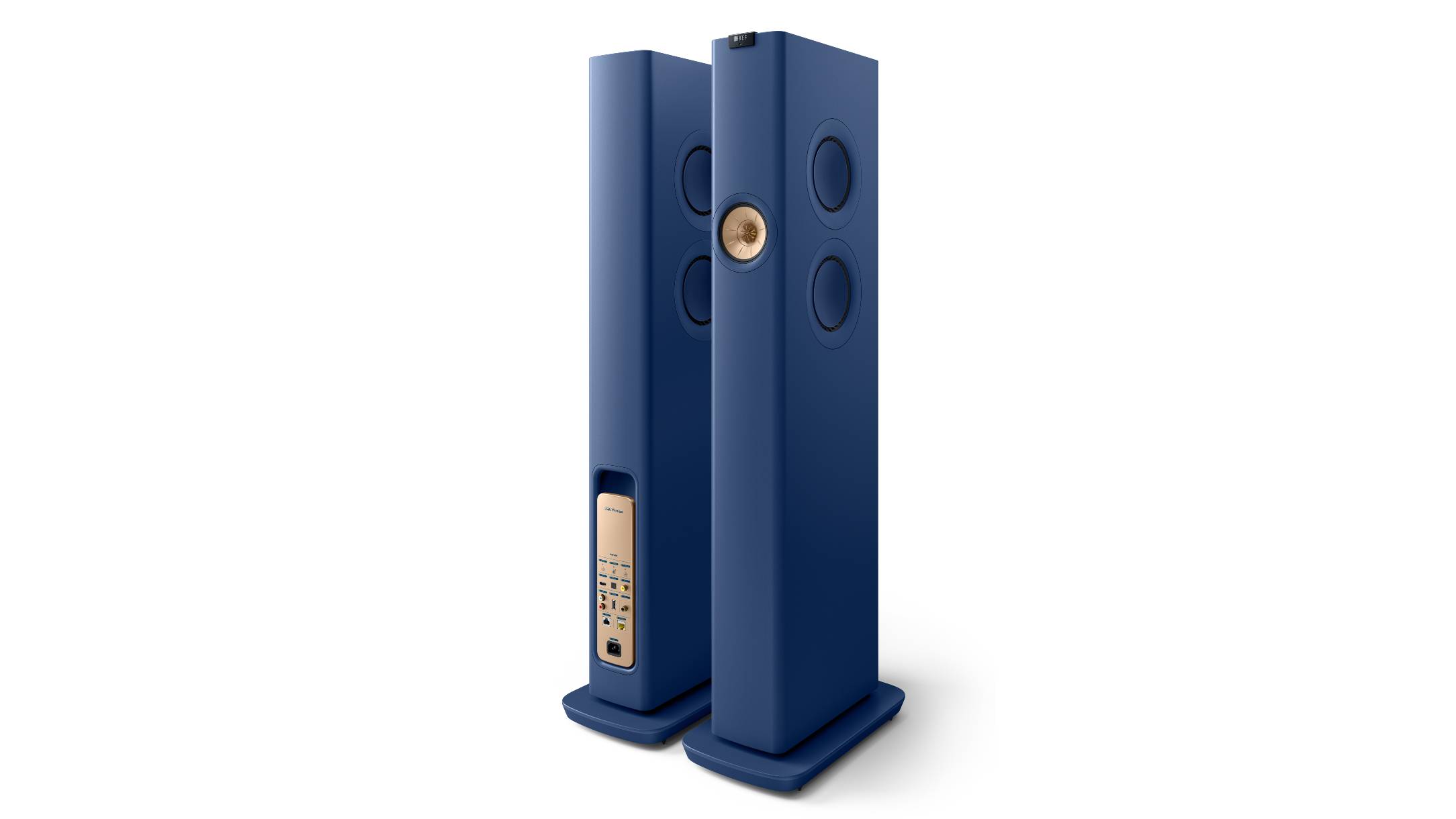
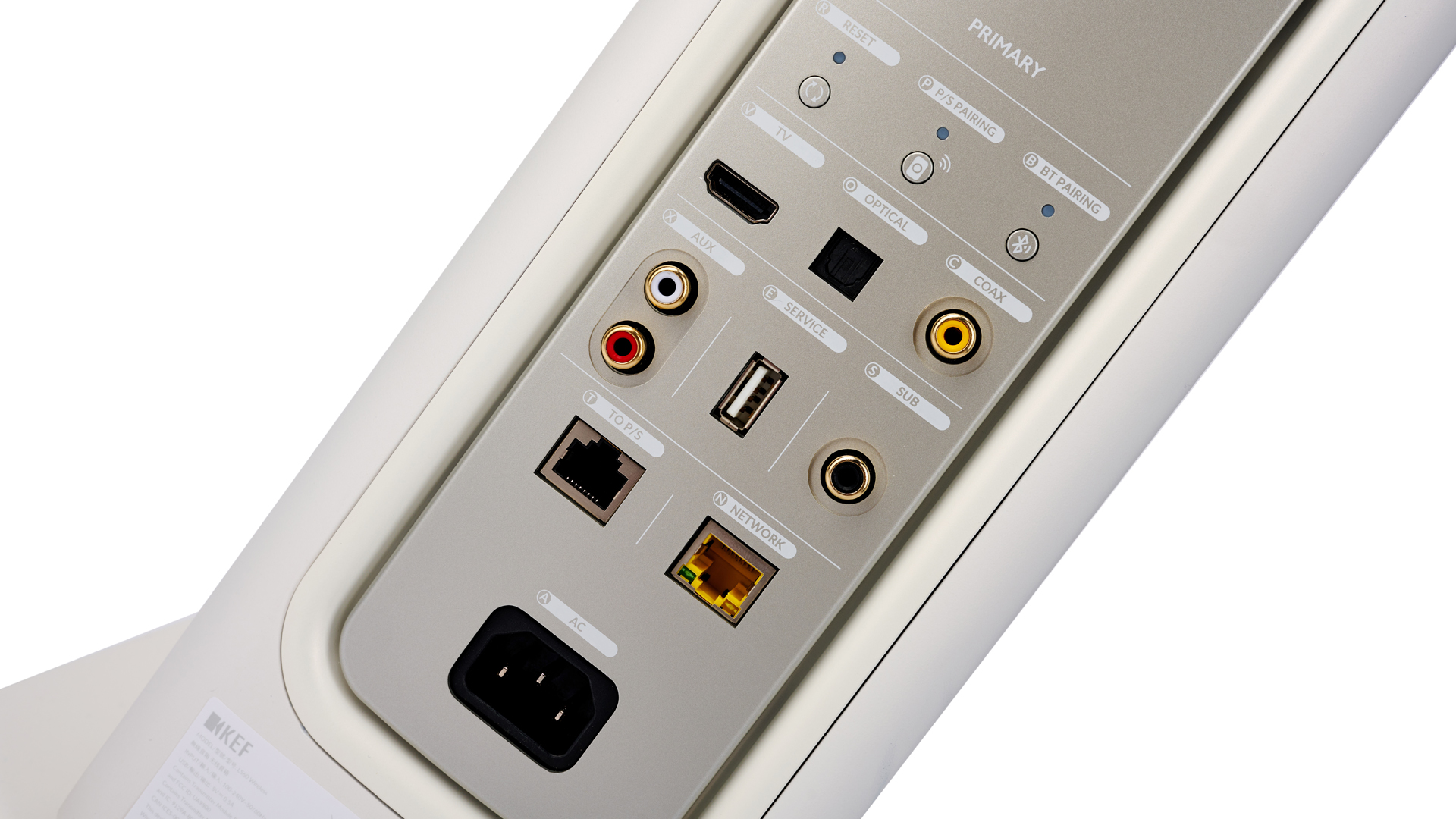

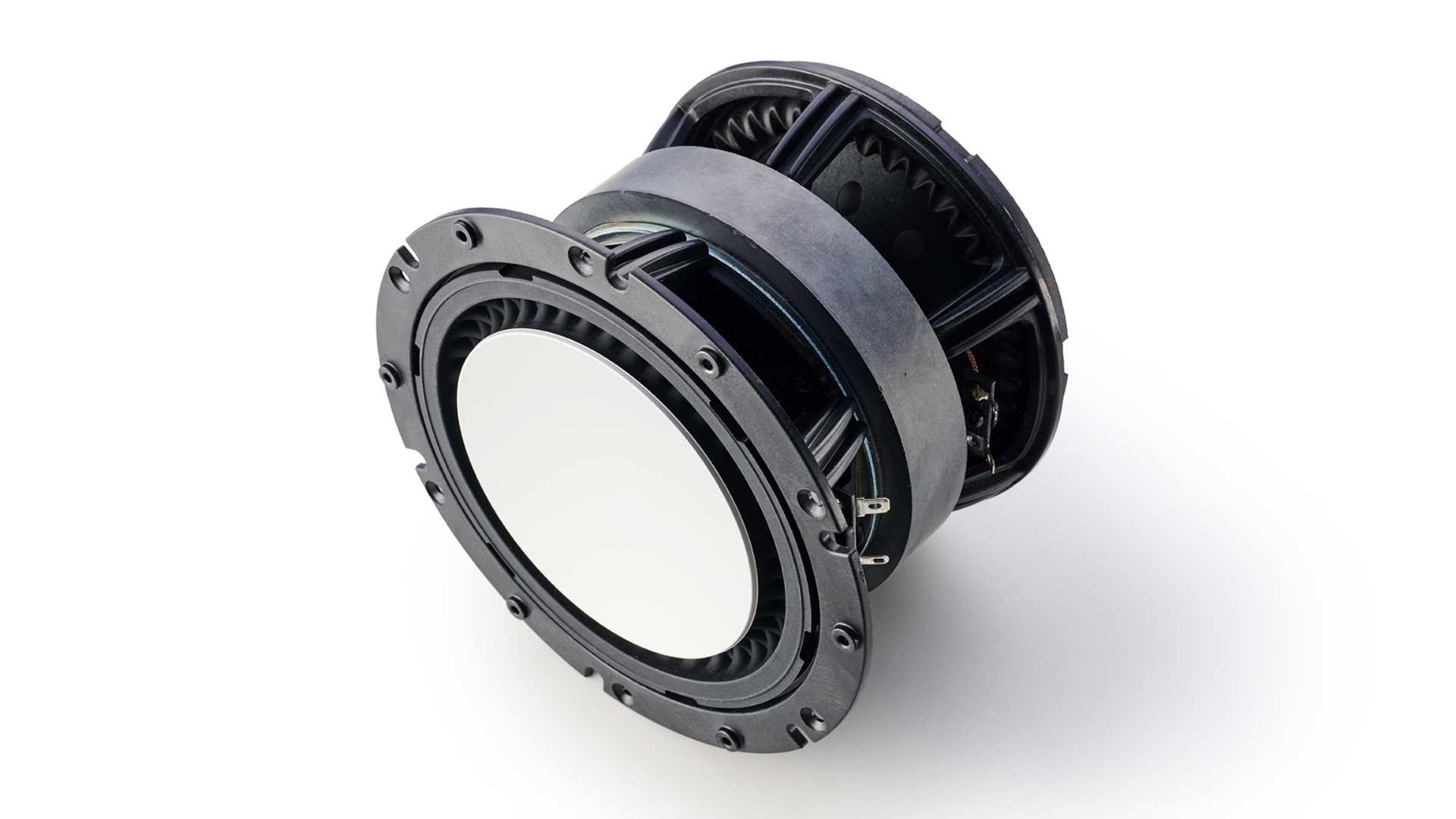
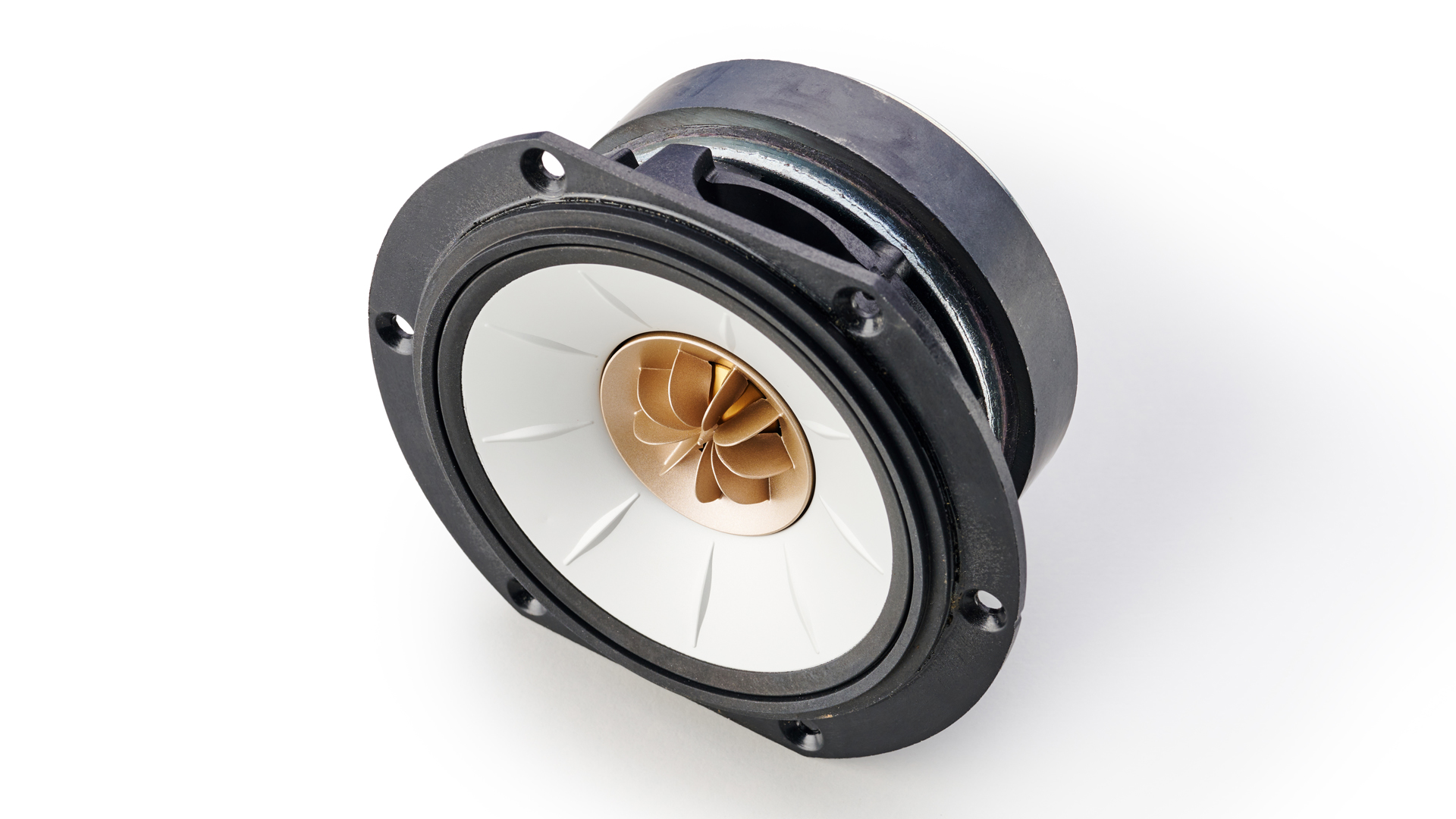
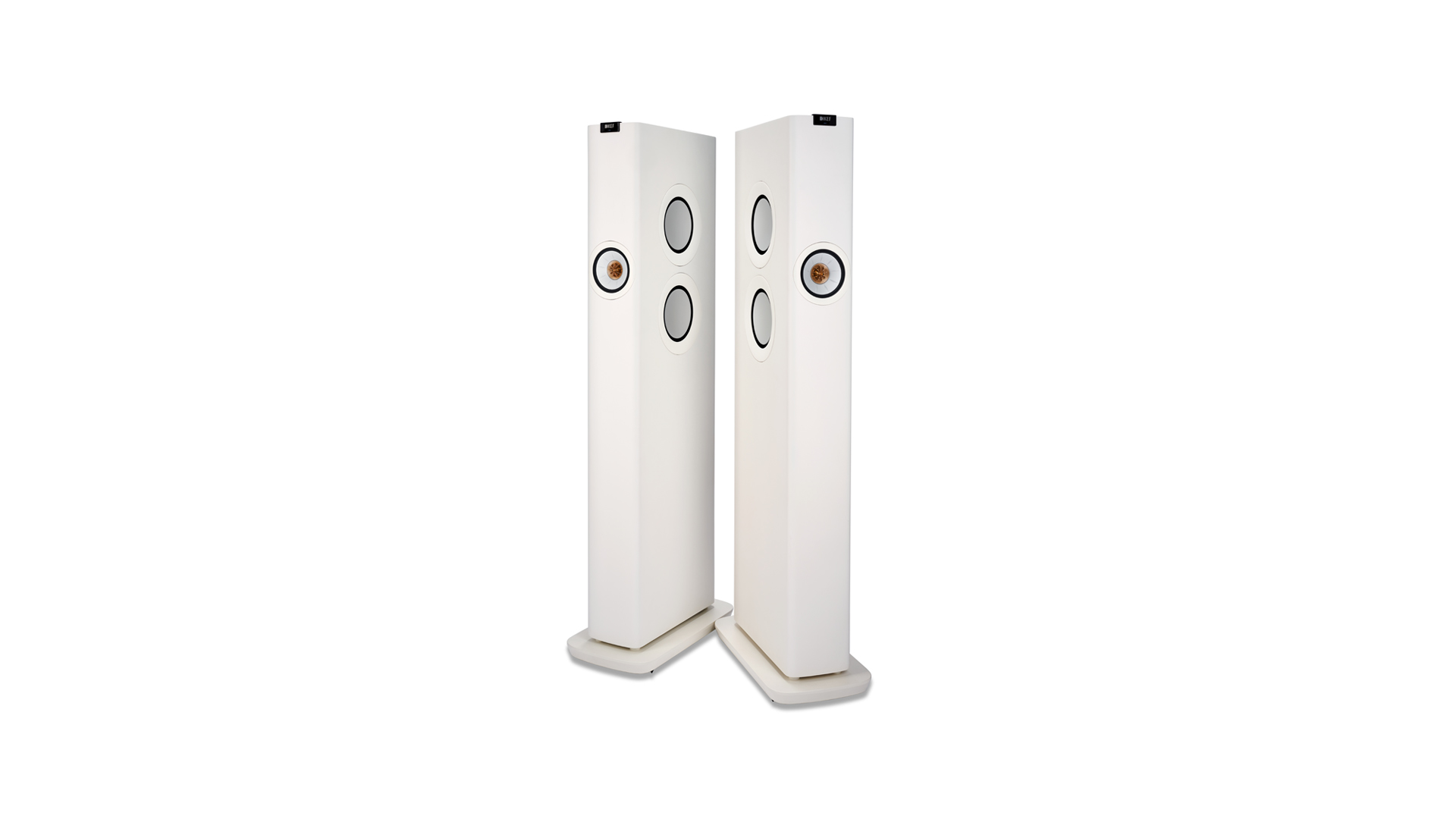

- Ideal for mid-to-large rooms
- For those who want bigger sound and more bass power
- Total 1400W of power (700W per channel)
- Inputs: HDMI eARC, coaxial, optical, RCA line level
- Available in four finishes
At the top of KEF's speaker systems range is the only floorstanding model, the LS60 Wireless. It would be reductive to call them 'LS50 Wireless II in floorstanding form', as the technology and driver arrangements have been reworked and re-engineered to fit the ambitious floorstanding design.
Design: You might think the largest and most expensive of KEF's systems is only for those who have a really big room (and deep pockets). While you certainly need to have the funds to consider them, they are actually far more slender and svelte than you might imagine. The cabinets are extraordinarily slim, with each tower measuring just 13cm across (excluding the plinths). In comparison, LS50 Wireless II standmounters are 20cm wide and the LSX II are 15.5cm wide – so you may find that you will be able to fit the LS60 in just about any space. It's made to the same high quality as the rest of KEF's range, and in our original review, we said we were "transfixed by what is one of the most impressive-looking pairs of speakers we have seen". High praise indeed, and this sleek floorstanding system is available in four finishes.
Technology: The trademark 12th-generation Uni-Q driver appears here as expected, but it's an entirely new driver made to fit the LS60's slimmer profile. It's the smallest Uni-Q driver KEF has made so far (yes, even smaller than the ones in the compact LSX II) with 19mm tweeter and 10cm midrange driver, and it's further bolstered by the inclusion of the innovative MAT technology. But how do you get enough bass from such a small enclosure? Since it wasn't able to mount a larger drive unit on the front or conventional drivers in such a small space, KEF instead placed two pairs of its Uni-Core "force cancelling" drivers (four in total) on the side panels. The drivers use a single magnet in the middle with a shared motor system. The voice coils from each driver have to be of a different diameter too, to fit. It's an extremely clever way of getting more bass from smaller cabinets, and we were so impressed that we gave the Uni-Core a What Hi-Fi? Innovation of the Year Award in 2022. These Uni-Core drivers are further positioned equidistantly around the main Uni-Q drivers, so that the highs, mids and lows all appear to radiate from a single point toward the listener. The benefit of this, much like the single point source Uni-Q driver, is that you get precise imaging and accurate sound over a wide listening area.
Overall, you get a whopping 700W of power per channel, with a combination of class A/B and class D amplifiers powering each driver. To counteract this top-heavy design and ensure that tower stays stable, each floorstander is grounded by a reassuringly heavy base plate. And unlike all the standmount models above, which have a bass reflex port at the rear of the speaker, the LS60 Wireless is a sealed port design.
Features: The streaming features are identical to the standmounter LS50 Wireless II model, right down to the file resolutions supported over the different inputs. They share the same physical connections as well, bar one difference: the LS60 Wireless has RCA line-level analogue inputs instead of a 3.5mm aux input. At the risk of repeating ourselves, the same wired and wireless speaker link options are present here and, as with all LS models, you can connect the system to your home network via wi-fi or wired ethernet. All in all, it's a fully featured system that can be connected to any source and stream from any connected device.
Sound: Any worries we had about the potential loss of that cohesive, integrated KEF sound because of the introduction of multiple drivers melt away as soon as we start listening to the LS60 Wireless. The integration is excellent. We said in our original review: "The LS60 Wireless presents an immersive and focused stereo image that rival products could only dream of. There’s width and height, but it never sounds stretched and you never lose the sense of precision and control that the KEFs show over the music."
David Bowie's Modern Love sounds fantastically well-organised, with every instrument and vocal note layered beautifully in the soundstage. It's a lively and enthusiastic sound that, much like the LS50 Wireless II, keeps our feet tapping along to every tune we play. Precision and solidity feature high on the LS60's list of talents, while it also retains a masterful level of control, grip and composure over music – but never feels clinical or at the expense of music sounding, well, fun. Dynamics and scale are a notch up from the LS50 Wireless II's performance, too – orchestral dips and swells are delivered with ferocity of power and delicacy in equal measure. The edges of notes are clearly defined, but we particularly love just how pointed and dramatic the quiet, almost silent, moments in between notes go – that's a true mark of a speaker's dynamic prowess.
The bass performance is delightful, astonishing us with the amount of impact and power from such slender cabinets. That brooding bass note in James Blake's Limit To Your Love plunges cavernously deep, while the richly textured bassline in Sbtrkt's Wildfire is pulled taut, propelled by driven intent and is so weighty and detailed it is almost tangible.
"It’s fair to say this system serves up arguably the finest audio we’ve heard from such a product so far" – we can only echo the sentiments from our original review once more. The LS60 Wireless is a fine example of a modern hi-fi streaming system, and there is no real rival if you are after a premium floorstanding solution.
Reasons to buy: The ultimate all-in-one speaker system in floorstanding format; ideal for larger rooms; excellent dynamics, detail and bass power/depth. Surprisingly slim profile for floorstanders, clever driver design and engineering.
Reasons to avoid: Expensive; the same streaming features and specs are available in the cheaper standmounter model.
- Read the full KEF LS60 Wireless review
- KEF’s Uni-Core technology wins Innovation of the Year at the What Hi-Fi? Awards 2022
MORE:
Best active speakers: budget and premium models tested and ranked
Best hi-fi systems: CD, vinyl and all-in-one systems for every budget and style

Kashfia is the Hi-Fi and Audio Editor of What Hi-Fi? and first joined the brand 13 years ago. During her time in the consumer tech industry, she has reviewed hundreds of products (including speakers, amplifiers, turntables and headphones), been to countless trade shows across the world and fallen in love with hi-fi kit much bigger than her. In her spare time, Kash can be found tending to an ever-growing houseplant collection and shooing her cat Jolene away from spinning records.
